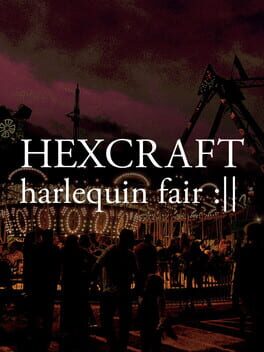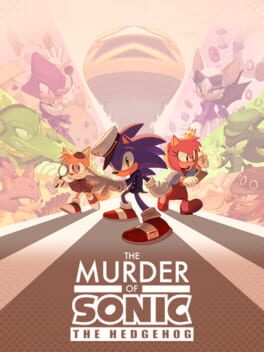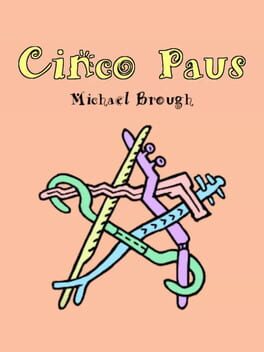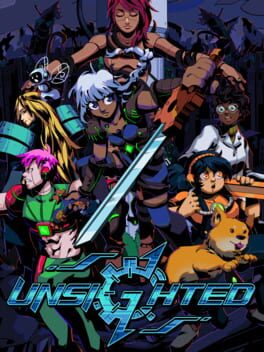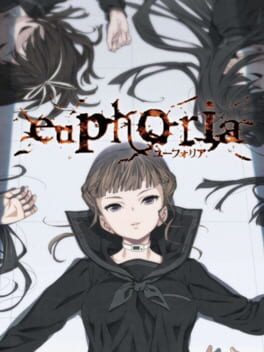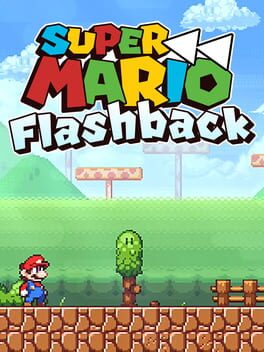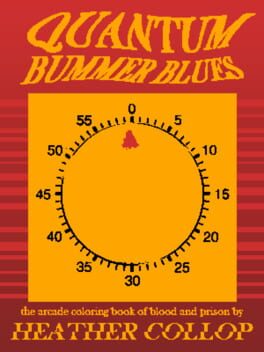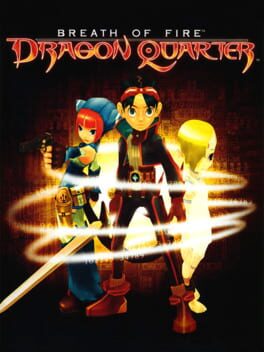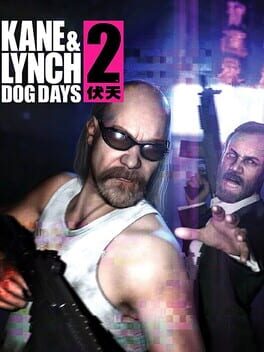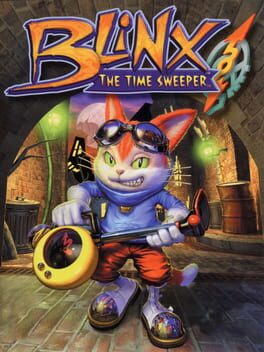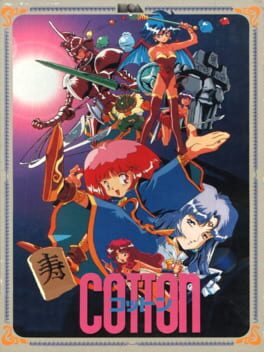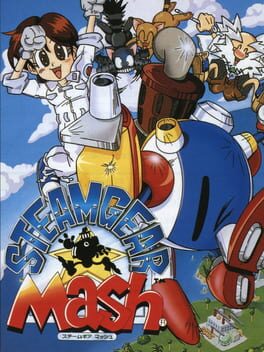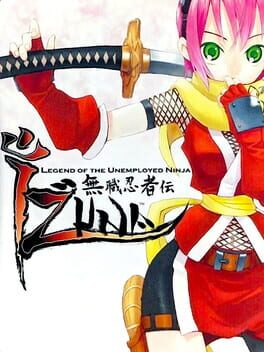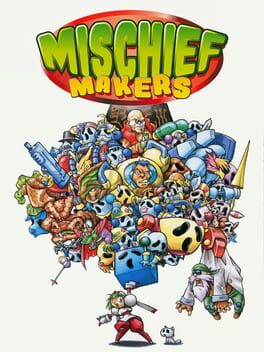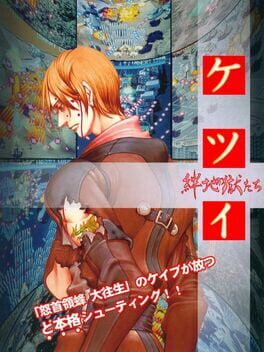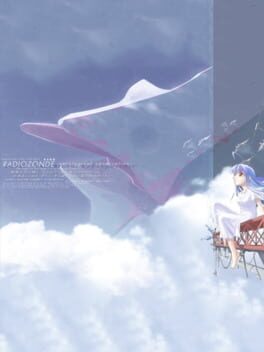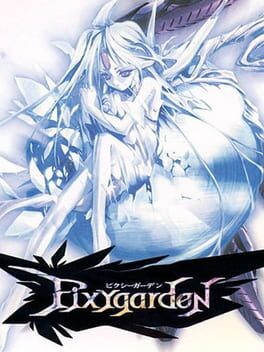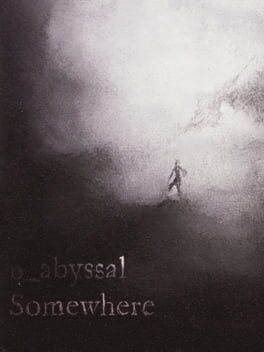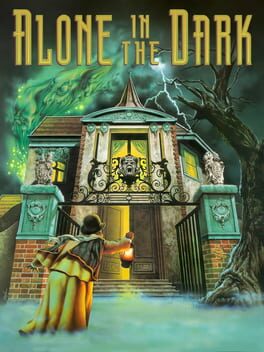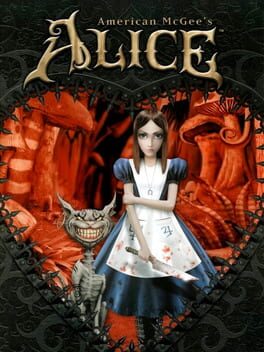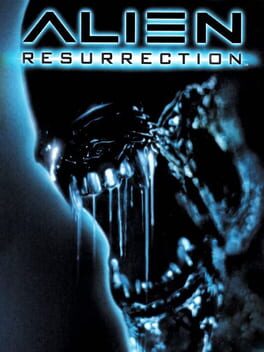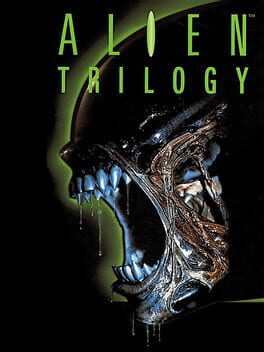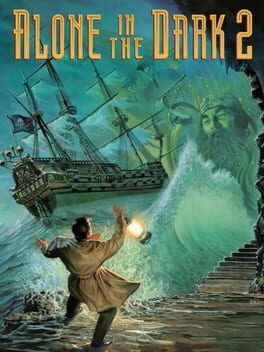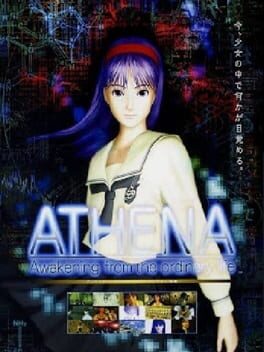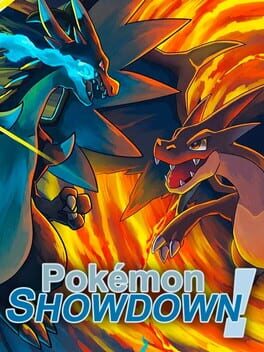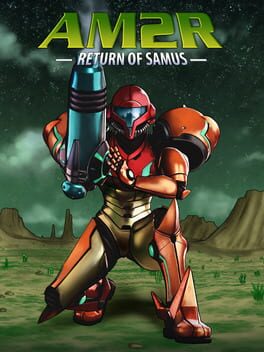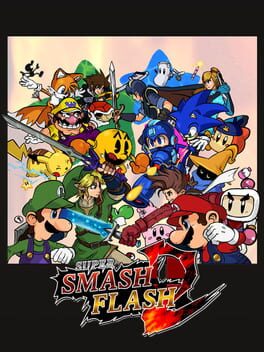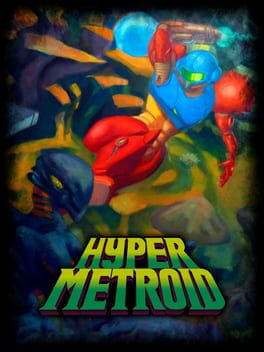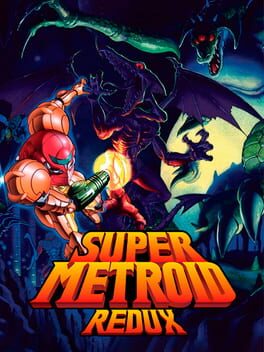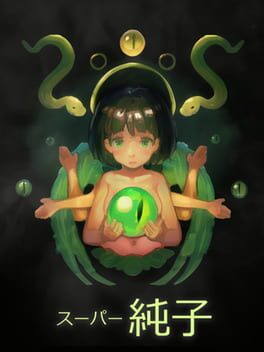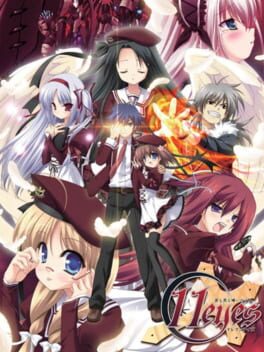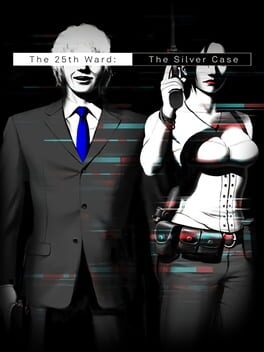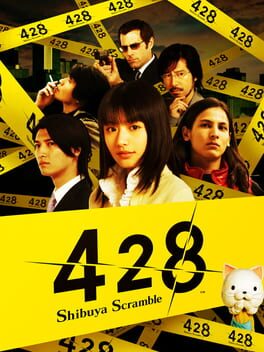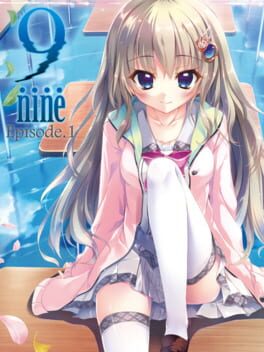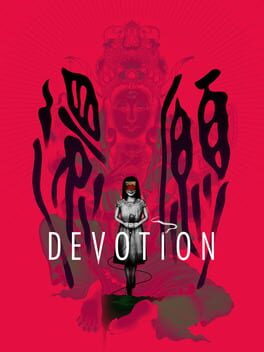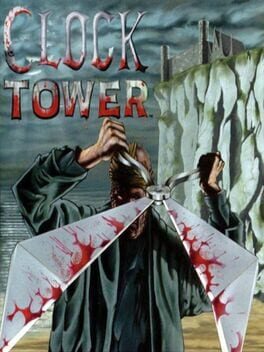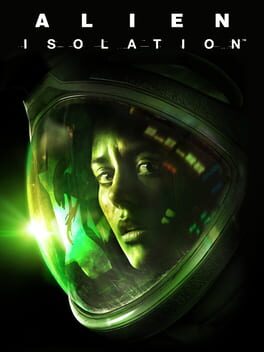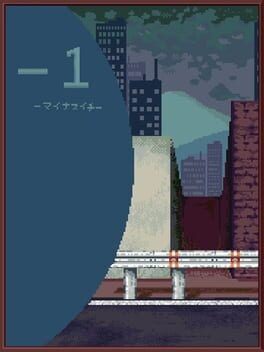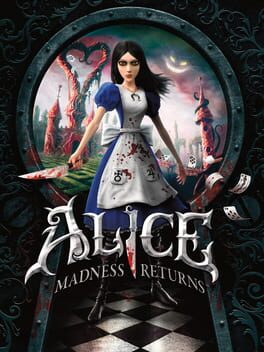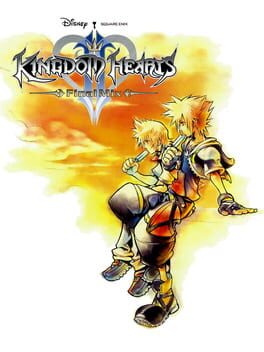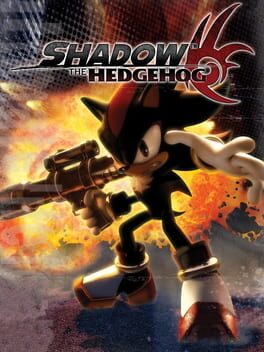BloodMachine
12 reviews liked by BloodMachine
Music Accompaniment
A solid murder mystery story that obeys the premise it set out before going for the 'twist'. A genuine whodunnit as a birthday party game for Amy. It's important to note in a slew of contemporary whodunit stories willing to break their own rules for a story: Disco Elysium (2019), Knives Out (2019), and even I would argue Tangle Tower (2014); The Murder of Sonic the Hedgehog (2023) stands as a completely honest and 'solvable' mystery. There's a contained reasonable mystery to solve before it ramps the plot in the 3rd act. Impressive on its own, far moreso for an 'april fools' work. Not willing to settle on just this the text also flirts with the mundane realities and interest that shape our 2020s world: infinite runners, beatboxing, escape the room entertainment, and even the anxiety of labor as 'many hats' gig economy service worker. To be clear my point here is regardless of whether it's manifestly 'critical' of each of these factors, for instance many of the nerds among us might be disappointed that the game doesn't poke fun at infinite runners. Regardless though even the acknowledgement that these are reflections of contemporary helps the player feel more immersed in the world. On top of this, the decision to make the player character the 'watson' sidekick is a great way to offset failure states in a fun and realistic way such that if you are wrong about some fact Tails can wrestle the falsehood of your reasoning away allowing for the story to remain on rails.
As a light comic strip style 2 hour romp into the world of Sonic as a fun cheeky cartoon world, this is fantastic. It's nice to see the Sonic cast intermingle in mundane and non combative environments, something that has truthfully not really been done aside from the comic book series, even the cartoon show is your general 'enemy of the week' formula, so I hope that they feel comfortable exploring this friendlier character driven side of the world of Sonic. All we have to do is look at another story involved game like Sonic Frontiers (2022) which admittedly seems perfectly servicable as a 3D action platformer, to see the comtemporary problem with sonic. It's not an issue of tone but an issue of centralizing 1 protagonist at the expense of the ensemble. What Sonic Frontiers represents is Sonic as a military general because its constant planning and preparation through him, crucially none of the other characters talk to each other. The ensemble cast approach to sonic has been discarded ever since the 3 character structure of Sonic 06' (2006) was written off as a mistake. As such, Sonic has been the default protagonist, which is monotonous when you have many other main characters you could explore, like in the case of Shadow the Hedgehog (2005) because in SEGA's view this and the ensemble approach is probably hurting the bottom line. The most endearing factor of Sonic in the view of the fans is how characters that arent Sonic interact with each other, the ensemble story building element, one that by design depicts Sonic as stageplay with all the shakespearean matters of miscommunication and deceit that come with. It's a genuine tragedy that this side of sonic has been unexplored and, as such, we can see The Murder of Sonic the Hedgehog as the first signs of finally awakening from that hibernation. If viewed that way, then its a wonderful awakening by all accounts.
My colleague Cadensia is a lot more sour about the entrapment of this work as an april fools prank, for her
"It may be a shame to point this out, but The Murder of Sonic the Hedgehog, while a harmless experience, reveals the franchise's structural problems. Caught up in its own nostalgia and struggling to innovate around a character from another era, the Sonic Team proved incapable of coming up with a subversive and fresh concept. The Murder of Sonic the Hedgehog manages to do so, but the title is still plagued by being an April Fool's joke, and only seen as such by SEGA. There's something about the company's management that prevents them from really trusting a new generation that might have insights to offer on a truly major project." (link)
However there's two rebuttals to this line of reasoning I want to note here. This is a cynicism that over rides the corporate future based on what we already know, but we can't exactly rule out the idea that this is a test pilot work from SEGA to see if people would be interested in this side of the Sonic world merely disguised as an april fools joke. All we have to do is glimpse at the blatantly unfinished nature of other April Fools VN titles like Bug Fables: April Fools! (2018) to see how the formula of such a prank is supposed to go. It's not supposed to be a rich and finished story its meant to be a gag. There's no gag here, its a full free Visual Novel with a firm 3 act structure and an evolving minigame. So I wouldn't really rule this out based on that extra polish and care put into a 'joke' as a form of test piloting.
Beyond just that, the work is so flourished and well considered that even if it is just a shallow gag on SEGA's part this is a 'gag' that slipped through the cracks and let be told a millennial tale. An important note here is that compared to other corporate mega giants, SEGA is not that interested in copyright takedowns. This is obvious when looking especially at the development of Sonic Mania (2017) being made in tandem with fan developers. I don't want to go all 'glory to the corporation' but if we consider it as SEGA continuing to sabotage their own world, the lack of IP restriction means that regardless of what gets made in a stuffy 'canonizing' office building this work functions regardless as a joyful emission to other fans as a reference point for acceptable fan games that take the world into account as an internal space.
Anyway regardless of all that, the art is great and the positioning of all the characters is wonderful. I only have a couple minor complaints: I was not actually able to gather information and properly interrogate Rogue and Blaze in the casino and I really wanted to especially since Rogue is my favourite character. Aside from that the 'what would Sonic do' logic that tails puts forward, messianic blasphemy aside, doesn't really make that much sense. The sonic run minigame sections are meant to reflect your character thinking, but I don't know, the quickness and desperation of doing it reads to me a lot more as paniced 'racing thoughts'. Aside from just that, Sonic is not that forward thinking, in fact literally the core point of Sonic Adventure (1998) and the cartoons generally is that while he has a great heart and is proactive, he's not that thoughtful so relying on him as a way of life doesnt make sense in that context. This is an easy enough fix though, if you have somebody smarter like tails in the piloting seat during these minigames. However its not a huge loss that it is this way regardless. I also didn't play the story all at once either, so unlike my good pal Cadensia these runner sections didn't bother me much. Not to be too maternal but if you feel something as exhausting that may be a good sign to take a break! :3
All in all I think The Murder of Sonic the Hedgehog is a perfectly fine detective adventure romp, and the fact that it takes place on a sci fi enhanced train makes it all the more satisfying as a way to keep the story both self contained and enjoyable. If you like train transport like me it satisfies that itch immensely. A great way to spend a couple hours and in the process connect to the genuine aspects of Sonic's franchise that adult fans try to talk up. Really hope detective novelists check this one out, might play it again someday, that really is how much fun I had with it C:
A solid murder mystery story that obeys the premise it set out before going for the 'twist'. A genuine whodunnit as a birthday party game for Amy. It's important to note in a slew of contemporary whodunit stories willing to break their own rules for a story: Disco Elysium (2019), Knives Out (2019), and even I would argue Tangle Tower (2014); The Murder of Sonic the Hedgehog (2023) stands as a completely honest and 'solvable' mystery. There's a contained reasonable mystery to solve before it ramps the plot in the 3rd act. Impressive on its own, far moreso for an 'april fools' work. Not willing to settle on just this the text also flirts with the mundane realities and interest that shape our 2020s world: infinite runners, beatboxing, escape the room entertainment, and even the anxiety of labor as 'many hats' gig economy service worker. To be clear my point here is regardless of whether it's manifestly 'critical' of each of these factors, for instance many of the nerds among us might be disappointed that the game doesn't poke fun at infinite runners. Regardless though even the acknowledgement that these are reflections of contemporary helps the player feel more immersed in the world. On top of this, the decision to make the player character the 'watson' sidekick is a great way to offset failure states in a fun and realistic way such that if you are wrong about some fact Tails can wrestle the falsehood of your reasoning away allowing for the story to remain on rails.
As a light comic strip style 2 hour romp into the world of Sonic as a fun cheeky cartoon world, this is fantastic. It's nice to see the Sonic cast intermingle in mundane and non combative environments, something that has truthfully not really been done aside from the comic book series, even the cartoon show is your general 'enemy of the week' formula, so I hope that they feel comfortable exploring this friendlier character driven side of the world of Sonic. All we have to do is look at another story involved game like Sonic Frontiers (2022) which admittedly seems perfectly servicable as a 3D action platformer, to see the comtemporary problem with sonic. It's not an issue of tone but an issue of centralizing 1 protagonist at the expense of the ensemble. What Sonic Frontiers represents is Sonic as a military general because its constant planning and preparation through him, crucially none of the other characters talk to each other. The ensemble cast approach to sonic has been discarded ever since the 3 character structure of Sonic 06' (2006) was written off as a mistake. As such, Sonic has been the default protagonist, which is monotonous when you have many other main characters you could explore, like in the case of Shadow the Hedgehog (2005) because in SEGA's view this and the ensemble approach is probably hurting the bottom line. The most endearing factor of Sonic in the view of the fans is how characters that arent Sonic interact with each other, the ensemble story building element, one that by design depicts Sonic as stageplay with all the shakespearean matters of miscommunication and deceit that come with. It's a genuine tragedy that this side of sonic has been unexplored and, as such, we can see The Murder of Sonic the Hedgehog as the first signs of finally awakening from that hibernation. If viewed that way, then its a wonderful awakening by all accounts.
My colleague Cadensia is a lot more sour about the entrapment of this work as an april fools prank, for her
"It may be a shame to point this out, but The Murder of Sonic the Hedgehog, while a harmless experience, reveals the franchise's structural problems. Caught up in its own nostalgia and struggling to innovate around a character from another era, the Sonic Team proved incapable of coming up with a subversive and fresh concept. The Murder of Sonic the Hedgehog manages to do so, but the title is still plagued by being an April Fool's joke, and only seen as such by SEGA. There's something about the company's management that prevents them from really trusting a new generation that might have insights to offer on a truly major project." (link)
However there's two rebuttals to this line of reasoning I want to note here. This is a cynicism that over rides the corporate future based on what we already know, but we can't exactly rule out the idea that this is a test pilot work from SEGA to see if people would be interested in this side of the Sonic world merely disguised as an april fools joke. All we have to do is glimpse at the blatantly unfinished nature of other April Fools VN titles like Bug Fables: April Fools! (2018) to see how the formula of such a prank is supposed to go. It's not supposed to be a rich and finished story its meant to be a gag. There's no gag here, its a full free Visual Novel with a firm 3 act structure and an evolving minigame. So I wouldn't really rule this out based on that extra polish and care put into a 'joke' as a form of test piloting.
Beyond just that, the work is so flourished and well considered that even if it is just a shallow gag on SEGA's part this is a 'gag' that slipped through the cracks and let be told a millennial tale. An important note here is that compared to other corporate mega giants, SEGA is not that interested in copyright takedowns. This is obvious when looking especially at the development of Sonic Mania (2017) being made in tandem with fan developers. I don't want to go all 'glory to the corporation' but if we consider it as SEGA continuing to sabotage their own world, the lack of IP restriction means that regardless of what gets made in a stuffy 'canonizing' office building this work functions regardless as a joyful emission to other fans as a reference point for acceptable fan games that take the world into account as an internal space.
Anyway regardless of all that, the art is great and the positioning of all the characters is wonderful. I only have a couple minor complaints: I was not actually able to gather information and properly interrogate Rogue and Blaze in the casino and I really wanted to especially since Rogue is my favourite character. Aside from that the 'what would Sonic do' logic that tails puts forward, messianic blasphemy aside, doesn't really make that much sense. The sonic run minigame sections are meant to reflect your character thinking, but I don't know, the quickness and desperation of doing it reads to me a lot more as paniced 'racing thoughts'. Aside from just that, Sonic is not that forward thinking, in fact literally the core point of Sonic Adventure (1998) and the cartoons generally is that while he has a great heart and is proactive, he's not that thoughtful so relying on him as a way of life doesnt make sense in that context. This is an easy enough fix though, if you have somebody smarter like tails in the piloting seat during these minigames. However its not a huge loss that it is this way regardless. I also didn't play the story all at once either, so unlike my good pal Cadensia these runner sections didn't bother me much. Not to be too maternal but if you feel something as exhausting that may be a good sign to take a break! :3
All in all I think The Murder of Sonic the Hedgehog is a perfectly fine detective adventure romp, and the fact that it takes place on a sci fi enhanced train makes it all the more satisfying as a way to keep the story both self contained and enjoyable. If you like train transport like me it satisfies that itch immensely. A great way to spend a couple hours and in the process connect to the genuine aspects of Sonic's franchise that adult fans try to talk up. Really hope detective novelists check this one out, might play it again someday, that really is how much fun I had with it C:
CW: Discussions of Transmisogyny
The common response to vulnerable niche play experiences like Video Game Feminization Hypnosis (2019), Cave Story Sex RPG 2007 (2021), and He Fucked The Girl Out of Me (2022), is mockery both for the boldness of name and of content. Video Game Feminization Hypnosis is a psychic-design-manifesto with lines like "i dont care about the "puzzles" i just wanna explore weird islands & mess with the machines" and "ive half-joked about my games being laced with estrogen but i wonder how powerful they could be. what if we could use video games to forcefem ppl all over the world" nested as hyperlinks throughout her vent towards a better girly gameworld. Written in lowercase text and using internet acronyms like 'ppl', she speaks with a casual concern for unfettered femme exploration games as a way to potentially rewrite the social code.
It has not been product tested for review, nor has either of the other 2 games mentioned. The problem here is that the culture of 'gaming' itself is unable to step beyond the bounds of product review. Franz inquires into this problem around Cave Story Sex RPG 2007
"Why do we seek to quantify something clearly very personal based on how much it resonates with us?
I think my problem is that I think people are looking at this game as they would a product. Like it needs to have some value to me, otherwise it's not "worth playing".
Nadia, Fewprime, Blood Machine, npckc, communistsister, bagenzo, and [pourpetine] (https://xrafstar.monster/games/). These are in my mind the most notable transfemme gamedevs and their relevant store pages for their work¹. It's obviously not a comprehensive list, but this is my notation for who is the most publicly notable and prolific within the scene. Notice that all of the games on these pages are free as are the 3 games I opened with at the start. That's because transfemme gamedevs more often have to make their corpus free just to get eyes. So what are gaming spaces assessing the 'worth' of a completely no strings attached free simulated experiences? I think its the fact we dare to make people uncomfortable and borrowing a modicum of their time (across all the devs I've mentioned I cant think of 1 that takes more than 3 hours to finish, usually only being around 20 minutes in length at most). My sisters have to cheapen themselves to 0 just to get your ear and its still just met with mockery, harassment, and belittlement².
Even when a transfemme game dev gets the chance of any success at all she is thrown down again. In pourpetine's Hot Allostatic Load (2015) she notes among a litany of pained observations that
"One of my abusers was sent a list of the nominees for the upcoming games festival Indiecade. Unfortunately, I was on the list. I ended up winning an award, ostensibly to recognize my feminine labor in the areas of marginalized game design—years of creating access for other people, publicizing their games, giving technical support, not to mention the games I had designed myself. Instead of solidarity from other marginalized people in my field, I was attacked."
Video Game Feminization Hypnosis beats to a much more Utopian drum. A belief that we can mesmerize people into a more pure goo out of this vindictive rut, create a games made out of love, show people feminine Exits.
I believe in all that. I also believe that my words and those of my sisters are constantly being cast a sidelong jeer of disposability. That I and my sisters are then to blame for when a mobbing happens and not the world's own biases and outrage. This world has made this all quite non-negotiable, no more playing along with the democratic cesspits and hateful comedy routines. Here's to reflecting on the play experience others treat as compost as if its the most meaningful urtexts in the world because to quote pourpetine again "Build the shittiest thing possible. Build out of trash because all i have is trash. Trash materials, trash bodies, trash brain syndrome. Build in the gaps between storms of chronic pain." trash art is my queendom.
I hope it suffocates society before it can flee to their patriarch Arks. As princess put it here 'flood the world and dilute the sludge'.
-------------------------------------------------------
1. 2 notable exceptions I know of with pay to play games by transfemme is princess/Girl Software's other games, and the cowriting of Aevee Bee on Worst Girl Games. Also key in on the fact here I'm making no judgements on individual pricing of games as a moral decision.
2. Does not remotely just happen On Backloggd³ if you think this is just a grievance I have with this site you're gravely misreading me and I urge you to slow down your social media outrage use for a bit qt~
3. Although I should not lie, social media sites are remarkably more unreliable habitats for trans people than they initially appear, this place has been a great learning experience of that in my case
The common response to vulnerable niche play experiences like Video Game Feminization Hypnosis (2019), Cave Story Sex RPG 2007 (2021), and He Fucked The Girl Out of Me (2022), is mockery both for the boldness of name and of content. Video Game Feminization Hypnosis is a psychic-design-manifesto with lines like "i dont care about the "puzzles" i just wanna explore weird islands & mess with the machines" and "ive half-joked about my games being laced with estrogen but i wonder how powerful they could be. what if we could use video games to forcefem ppl all over the world" nested as hyperlinks throughout her vent towards a better girly gameworld. Written in lowercase text and using internet acronyms like 'ppl', she speaks with a casual concern for unfettered femme exploration games as a way to potentially rewrite the social code.
It has not been product tested for review, nor has either of the other 2 games mentioned. The problem here is that the culture of 'gaming' itself is unable to step beyond the bounds of product review. Franz inquires into this problem around Cave Story Sex RPG 2007
"Why do we seek to quantify something clearly very personal based on how much it resonates with us?
I think my problem is that I think people are looking at this game as they would a product. Like it needs to have some value to me, otherwise it's not "worth playing".
Nadia, Fewprime, Blood Machine, npckc, communistsister, bagenzo, and [pourpetine] (https://xrafstar.monster/games/). These are in my mind the most notable transfemme gamedevs and their relevant store pages for their work¹. It's obviously not a comprehensive list, but this is my notation for who is the most publicly notable and prolific within the scene. Notice that all of the games on these pages are free as are the 3 games I opened with at the start. That's because transfemme gamedevs more often have to make their corpus free just to get eyes. So what are gaming spaces assessing the 'worth' of a completely no strings attached free simulated experiences? I think its the fact we dare to make people uncomfortable and borrowing a modicum of their time (across all the devs I've mentioned I cant think of 1 that takes more than 3 hours to finish, usually only being around 20 minutes in length at most). My sisters have to cheapen themselves to 0 just to get your ear and its still just met with mockery, harassment, and belittlement².
Even when a transfemme game dev gets the chance of any success at all she is thrown down again. In pourpetine's Hot Allostatic Load (2015) she notes among a litany of pained observations that
"One of my abusers was sent a list of the nominees for the upcoming games festival Indiecade. Unfortunately, I was on the list. I ended up winning an award, ostensibly to recognize my feminine labor in the areas of marginalized game design—years of creating access for other people, publicizing their games, giving technical support, not to mention the games I had designed myself. Instead of solidarity from other marginalized people in my field, I was attacked."
Video Game Feminization Hypnosis beats to a much more Utopian drum. A belief that we can mesmerize people into a more pure goo out of this vindictive rut, create a games made out of love, show people feminine Exits.
I believe in all that. I also believe that my words and those of my sisters are constantly being cast a sidelong jeer of disposability. That I and my sisters are then to blame for when a mobbing happens and not the world's own biases and outrage. This world has made this all quite non-negotiable, no more playing along with the democratic cesspits and hateful comedy routines. Here's to reflecting on the play experience others treat as compost as if its the most meaningful urtexts in the world because to quote pourpetine again "Build the shittiest thing possible. Build out of trash because all i have is trash. Trash materials, trash bodies, trash brain syndrome. Build in the gaps between storms of chronic pain." trash art is my queendom.
I hope it suffocates society before it can flee to their patriarch Arks. As princess put it here 'flood the world and dilute the sludge'.
-------------------------------------------------------
1. 2 notable exceptions I know of with pay to play games by transfemme is princess/Girl Software's other games, and the cowriting of Aevee Bee on Worst Girl Games. Also key in on the fact here I'm making no judgements on individual pricing of games as a moral decision.
2. Does not remotely just happen On Backloggd³ if you think this is just a grievance I have with this site you're gravely misreading me and I urge you to slow down your social media outrage use for a bit qt~
3. Although I should not lie, social media sites are remarkably more unreliable habitats for trans people than they initially appear, this place has been a great learning experience of that in my case
Cinco Paus
2017
I'm a huge proponent of games which do more with less, so it's little wonder I adore Michael Brough and his design philosophy. He is a gem of the TIGSource-era indie scene who believes above all else that games are about making choices. Always making choices. His brand of roguelikes, endearingly referred to as Broughlikes, embody this ethos well, be they designed by Brough himself, or his ardent supporters. Their most important features are:
Small play areas
Zugzwang (compulsion to move)
Singular control (moving is identical to acting)
Predictable randomisation
Maximal exploration of a singular element of roguelikes
This foundation is an immediate and apparent departure from the prototypical roguelike experience, wherein boards can be very large, their spaces ultimately uninteresting, where players can freely wait for an advantage in combat, where actions are discrete from one another, where random elements can make the totality of the experience feel dependent on luck. That notion of luck is superficially present in Broughlikes as well, but only due to a lack of understanding fundamentals of their design.
As detailed in his dev notes, Broughlikes have each tackled different elements of Rogue[-likes] such as single-use items (Zaga-33), reusable spells (868-HACK), empowering items (Imbroglio), and in the case of Cinco Paus, item identification. Stemming from a conversation with Zach Gage, Brough wanted to explore how Rogue[-like] items don't need to be approached in binaries of knowing nothing and knowing everything, rather, if an item has multiple effects (like cursed items in many RPGs and roguelikes) some might be apparent up front, and others are only known later. Furthermore, some effects might be arcane to those unfamiliar with a game's vocabulary. Drawing from his own experience of learning Portuguese, Brough replicated this abstraction through having every scrap of text be in the world's sixth most spoken language.
As perhaps the most distinct of the Romance languages, this wonderfully approximates a vague understanding of the terms at play here. I can deduce, from context and my own scant knowledge of French and Spanish, that 'pontos' means 'points,' but cognates can only carry one so far. As one uses their wands to determine their effects, little icons appears next to them which can convey some meaning, but nonetheless leaves some layer of non-understanding. Only through greater experimentation then could one reasonably ascertain that 'Tesouro Escondido' means not only 'Hidden Treasure,' but that it mechanically requires your beam to end in an area with three walls. One of the most befuddling effects in my experience was 'Terremoto' -- 'Earthquake' -- which only goes into effect when the beam crosses the centre-most tile of the room.
When the particulars finally snap into place, the feeling of understanding is unmatched by almost anything else I've ever encountered in a game. It is a pitch-perfect recreation of how learning works. The issue is that, like learning, it is a largely uphill battle with little perceived reward until it is completed. This is perhaps what most puts people off of Cinco Paus, as they have not put in enough effort to reap the benefits of that effort. Without knowing how wands and effects and enemies and items and everything coincides with one another, it reads as chaotic, random, and arbitrary. Like with a puzzle, chance success reads as just that, chance, a feeling of 'How was I supposed to know that?' whereas naturally reaching the solution feels earned through the application of tools and rules.
Cinco Paus follows a stepped curve, much like learning. Progress is staggered and by no means smooth. With enough time and effort, one reaches a new plateau. The effects are learned incrementally, the mechanics comprehended, successful runs achieved only for additional layers of complication to, inevitably, be added on top. Collecting five talismans confers an artefact with its own specific effects and use outside the bounds of the wands. Further successful runs completed in sequence add modifiers to existing elements. There is always a next level of understanding to be achieved. That is precisely what has kept me coming back to Cinco Paus month after months, year after year. That is what keeps me coming back to Broughlikes in general. I stumble through 868-HACK runs. I have a low level knowledge of Imbroglio thanks to other people's decks. I am slowly improving at Cinco Paus. I see runs posted others and feel like I'm being presented differential equations. I come across strategies like this and my head aches. Much more than that, I see some of my favourite developers like Derek Yu and Raigan Burns falling head over heels for this goofy games with a silly blue wizard and I am infected by their passion. I see others replicating Brough's philosophy in their own games and I hope these constrained games never stop. Even if they do, the possibilities laid bare in those minuscule grids shows how Brough is a mind on the level of gaming's best and brightest.
Small play areas
Zugzwang (compulsion to move)
Singular control (moving is identical to acting)
Predictable randomisation
Maximal exploration of a singular element of roguelikes
This foundation is an immediate and apparent departure from the prototypical roguelike experience, wherein boards can be very large, their spaces ultimately uninteresting, where players can freely wait for an advantage in combat, where actions are discrete from one another, where random elements can make the totality of the experience feel dependent on luck. That notion of luck is superficially present in Broughlikes as well, but only due to a lack of understanding fundamentals of their design.
As detailed in his dev notes, Broughlikes have each tackled different elements of Rogue[-likes] such as single-use items (Zaga-33), reusable spells (868-HACK), empowering items (Imbroglio), and in the case of Cinco Paus, item identification. Stemming from a conversation with Zach Gage, Brough wanted to explore how Rogue[-like] items don't need to be approached in binaries of knowing nothing and knowing everything, rather, if an item has multiple effects (like cursed items in many RPGs and roguelikes) some might be apparent up front, and others are only known later. Furthermore, some effects might be arcane to those unfamiliar with a game's vocabulary. Drawing from his own experience of learning Portuguese, Brough replicated this abstraction through having every scrap of text be in the world's sixth most spoken language.
As perhaps the most distinct of the Romance languages, this wonderfully approximates a vague understanding of the terms at play here. I can deduce, from context and my own scant knowledge of French and Spanish, that 'pontos' means 'points,' but cognates can only carry one so far. As one uses their wands to determine their effects, little icons appears next to them which can convey some meaning, but nonetheless leaves some layer of non-understanding. Only through greater experimentation then could one reasonably ascertain that 'Tesouro Escondido' means not only 'Hidden Treasure,' but that it mechanically requires your beam to end in an area with three walls. One of the most befuddling effects in my experience was 'Terremoto' -- 'Earthquake' -- which only goes into effect when the beam crosses the centre-most tile of the room.
When the particulars finally snap into place, the feeling of understanding is unmatched by almost anything else I've ever encountered in a game. It is a pitch-perfect recreation of how learning works. The issue is that, like learning, it is a largely uphill battle with little perceived reward until it is completed. This is perhaps what most puts people off of Cinco Paus, as they have not put in enough effort to reap the benefits of that effort. Without knowing how wands and effects and enemies and items and everything coincides with one another, it reads as chaotic, random, and arbitrary. Like with a puzzle, chance success reads as just that, chance, a feeling of 'How was I supposed to know that?' whereas naturally reaching the solution feels earned through the application of tools and rules.
Cinco Paus follows a stepped curve, much like learning. Progress is staggered and by no means smooth. With enough time and effort, one reaches a new plateau. The effects are learned incrementally, the mechanics comprehended, successful runs achieved only for additional layers of complication to, inevitably, be added on top. Collecting five talismans confers an artefact with its own specific effects and use outside the bounds of the wands. Further successful runs completed in sequence add modifiers to existing elements. There is always a next level of understanding to be achieved. That is precisely what has kept me coming back to Cinco Paus month after months, year after year. That is what keeps me coming back to Broughlikes in general. I stumble through 868-HACK runs. I have a low level knowledge of Imbroglio thanks to other people's decks. I am slowly improving at Cinco Paus. I see runs posted others and feel like I'm being presented differential equations. I come across strategies like this and my head aches. Much more than that, I see some of my favourite developers like Derek Yu and Raigan Burns falling head over heels for this goofy games with a silly blue wizard and I am infected by their passion. I see others replicating Brough's philosophy in their own games and I hope these constrained games never stop. Even if they do, the possibilities laid bare in those minuscule grids shows how Brough is a mind on the level of gaming's best and brightest.
Unsighted
2021
CW: Videogame Difficulty Discourse
My Policy Guidelines
-----------------------------------------------------------
Considering the thoughtfully effusive praise from Maradonna focusing on why its probably one of the best game titles to come out of Brazilian culture. Along with the more reflective post on the game by Archagent focusing on the mechanics of grief and passing away. I would be remiss to write off the game and dismiss it entirely, and following that I'm quite surprised how many people I follow (and I follow a LOT) haven't touched this title yet at all. Lesbian overtones, rewarding top down action combat, post apocalyptic storytelling, and anti human sentiments seem like taken together the sort of interests that would apply to most of the people who read what I have to say. Anybody who enjoyed Hyper Light Drifter for example would likely find great company here. However, I must stay true to my roots here as someone who writes about games mainly to vent a bit so let me get into my caveats.
I think actually the most simple way to put my frustrations are not actually with the game itself per se, but with how videogame difficulty is conveyed to the player. When you start the game you have an option between "Explorer", "Action Girl (Recommended)", and "Robot Apocalypse" difficulty. Most players in actuality on their first play through are going to be choosing between the easy and medium modes, and leave hard mode for when they are actually familiar enough with the game mechanics. I don't think I've ever seen somebody actively choose a hard mode in a game on purpose for their first playthrough as anything other than a joke.
Recently I read a fantastic analysis of the importance difficulty framing by Duranda called How Can Game Options Help Casual Players See The Core Appeal Of A Game?. The stellar takeaway is that difficulty framing is a mechanic that is important to the overall package
"Rather than your average difficulty settings which are often framed as 'the same gameplay, but stricter', difficulty settings that radically alter core game behavior are more likely to spark the imagination and in turn inspire deeper understanding of the game’s core appeal."
In theory this sounds like a huge ask for a 2 person indie title, but the curse I'm speaking of then is not so much specific to the game itself as it is to maybe the weakest point in both games critique and development that exists: Difficulty transparency. Writers often don't mention at all the difficulty they played on or the fluctuation in difficulties midgame. Whether they used assists and what they thought of them. Similarly designers tend to not give a clarity to the distinctions in difficulty. The reason why is because there's often a homogeneity in approach, that if you did not play the game at least on the recommended settings or above then you didn't really experience the game, instead you are just a passive object through it, no better than a journalist. This sentiment that 'casual' play should not be utilized is often undermined by the fact that it usually only applies to a specific type of game experience: The action genre. Compare for example most people's relationship nowadays with point and click adventure games, often dismissing their puzzles as 'nonsensical' and relying liberally on walkthroughs when needed and you get a general understanding that lateral puzzle games need not apply to this rule of thumb. What this rule of thumb fails to keep in mind though is that when it comes to more reflex based games different people have vastly different reflex times depending on various life factors and desires from gaming. Generally human reaction time to visual stimulus rests somewhere between 150 to 300 milliseconds, which doesn't sound like a huge distinction, but seeing as there is 30-60 frames in a second thats the difference between 4 and 8 frames which is the difference between seeing a wind up and responding or not.
In actuality this 'test' of player skill is usually already great for people with already fast reaction times. They get first breakfast to jokes of other players being 'filtered' by godhand etc. the rest have to rely on 2 factors to keep up with swift reaction times:
1. Learning the attack patterns through trial and error
and
2. Exploiting the systems in your favor, consciously or not
Let's actualize this through a game mechanic. In Unsighted there is a parry mechanic where upon seeing a red indicator on screen you hit a button to parry an enemy and then close in with a reply attack. What I noticed is that I was generally following attack patterns and audio cues for parrying instead because due to my slow visual reaction time (somewhere at a resting level between 250-300 for whatever reason) the ability to respond in time was simply not fast enough within that visual parry window. I would be calling the parry unreliable and thus getting annoyed with it, the reality is it was probably completely reliable to the 'average' and 'recommended' player and I fell just far enough out of that range to find that hard to rely on. Thus I had to exploit the Cog mechanic (which give you temporary buffs) and learn attack patterns through trial and error instead. Eventually I would run out of materials for using Cogs so I was floudering more slowly against bosses instead.
The problem is that for Unsighted, the combat itself becomes punishing based on whether or not you can parry in time. Parries are the way to output the most amount of damage so it becomes vital, especially versus boss fights, in order to not die several times in a row. But unfortunately, there's no time to spare here. Each time you die that much more time you lose to being able to help and save NPCs. You're letting everybody down when you die, not just yourself. It no longer becomes an at best tedious process of learning boss attack patterns and instead transforms into something actually stressful.
Far be it from me to make it out like this is just a reflex based issue though, this game in particular is mainly focused on puzzling into action combat. Outside of boss fights, action combat trends towards easy enough that it can be discarded as a general concern. So if you have issues with puzzling things out you will also be stressed by the doomsday clock. I don't for the most part. I can solve problems generally quite quickly. However if that does apply to you then you will want the time to be slower than the suggested amount as well.
This is compounded by the fact that in an environment where games like Majora's Mask and Undertale have already established a general player motivation to not let everyone down, there's often a huge stress to reset and start all over to do right by NPC's better and not have them die. At some point I looked at the amount of time I had left and said 'I can do this better if I restart' but of course that robs the 'authenticity' of the experience. Since I'm a 'memory vessel' of the original player character who knows a bunch of extra tricks I shouldn't this is why impressing difficulty to the player on the outset is incredibly important. Postmodernism aside, game immersion often relies on this feeling of the first time playing being imbued with 'authentic' experience. So if you walk into Unsighted and lose half the NPCs because you're simply bad at puzzle mechanics, that's not good. Sure the game is supposed to be stressful and give you a reason to persevere, but if its a matter of unknown limitations from the outset then you're fumbling around and not persevering much at all. This is the difference I can categorize between a feeling of actual stress and simulated stress. Simulated stress is the yearning to achieve, actual stress is recognizing that in spite of yourself, you just cant.
I can't stand most boss fights in games because they become pattern recognition checks with large health sponges attached to them. Due to my generally slower reaction speed this makes a great deal of sense. Most people with a better reaction time than me feel like they can learn and respond to attacks from a boss even the first time dynamically and quickly whereas I tend to have issues even keeping up.
This is all to say that I think the reccomended difficulty for Unsighted, at least for single player experience, is a bit too hard for what it's trying to push out of a player. You have 5 different dungeons to explore and map out plus a final boss and roughly about 8 hours to functionally do it before almost all the NPCs die. You can get dust that gives some of the NPCs an extra 24 hours of life, these tend to be somewhat rare. Each second a minute of in game time passes on the recommended mode so you're looking at an 24 extra minutes. That sounds like a lot but for example Iris, your 'Navi' character who actively helps you throughout starts with only 194 hours before they terminate and turn into an Unsighted (basically a zombie). That comes out to around 3 and a half hours give or take, and that means you have to shove dust in their maw for the whole game in order for them to be alive and help you progress for as much of the experience as possible. I think the time per minute should probably be closer to around 2.5 to 3 seconds considering the amount of content the game is pushing you to move through.
I may be wrong here, as it seems that most people who played through the game didn't mind and thought positively of it. But I think the fact is when we read Archagent's testimony for example we read the story of somebody for whom almost everyone died and while forlorn reflected that 'I did the best I could.' A completely valid experience, but not one that maps onto my own desires to save at almost all costs virtual NPC and their desolate society. I was pumping dust into everyones mouths to stave off death which meant that for me, death was not going to be slow and induvidual but instead a massacre over the course of 2 days. It wasn't staving off 1 NPC's death I really liked, but pretty much the entire town.
I think one of the other reasons I feel this extra pressure to the degree of either wanting to give up, start over, or get cynical is because the game's narrative pushes a 'chosen one' sentiment. You are the strongest robot of your type, out to save your wife and help anybody along the way, the rest of the town has all but given up on actively fighting and instead imbue all their hope for survival solely into you. In spite of that though, they still have to run shops apparently. I don't know about you but if I was in a dire last ditch effort post apocalypse scenario the last issue that would be on my mind is currency. Currency is usually the result of having to simplify larger logistical networks and trade so that bartering no longer becomes a nessecity. However often in scenarios of war and famine, food for example is doled out on a by person basis of basic need until the situation improves again. In dramatic scenarios merchants and shops fall by the wayside for a moment, so I find it interesting the degree to which games have trouble seperating from this currency process. Usually games more aware of this incompatibility justify it through saying the currency is some other life force, Dark Souls has 'souls' for example with the merchants saying 'I dont need money, I'd rather your souls'. Currency itself also becomes a gesture of the absurd and desperate. That's why it's justifiable that Hollow Knight has the shell currency system, so few people even use it now, and they are all incredibly delusional about the degree to which their way of life can still be maintained. Unsighted unfortunately doesn't have that excuse, all the characters know exactly that they will die next week. It feels like I'm being distanced from the actual help the people left want of me, they want me to help them as an old friend, and I do. But they also want me to be an obedient customer for them, which I don't.
Instead I would have preferred the checks for say, upgrading a sword, to be based on having the raw materials and maybe making me wait like a few hours. That would be much more realistic to what the game is trying to convey mechanically but of course it would be a difficult system to get right.
The only other negative thing I'll say about Unsighted is that it has a similar issue Elden Ring does, you have all these gorgeous iconic and in many cases sexy characters to speak to in the hubworld (a town). In total you have about 20 lines of dialogue for each of them outside of dramatic cutscenes which is not nearly enough to feel close to the characters and their plights. The focus was generally put on engaging combat, exploration, and puzzle design. All to well effect sure. However for me a game about grief and trauma should tend to have much more dialogue. I want to have 10k words from characters, I want to see some of them tear up about their own potential deaths and talk to me about the specific anime we watched together. I don't want to give an NPC 4 dust and get a cool effect from it, that's not the point for me at all.
In spite of all those misgivings I do think the feedback during attacks, variety of weapons, and visual design is quite good. The world is gorgeous and the puzzles are decently engaging although not replayable enough that I'd want to start over. The upgrade system of being based on 'chip' loadouts is novel even though it's hard not to justify running as much defense and stamina in the loadout as possible. The time mechanic itself is well established and I like it a lot, but the game is overall too difficult to actually sit through. It's not that I'm uncomfortable with failure, its that failure feels more like having to clear a giant roadblock rather than being gummed up for a few minutes. But it has to be emphasized here that this is probably some of the best character designs I've seen in a game like this. The sapphic energy of having a pony tailed muscle girl like Ariel and a pink haired pixie cut frown like Vana, with their distinct body types feels great. It's an awareness of the diversity of body types and hair styles that trans-women seem especially good at picking up on. Not to mention that the fact most of the cast is women and the character you play as is a woman just warms up my gay heart, but it's just not enough to pull it all quite together.
I would probably have felt a lot better about it had I played on easy mode from the start. I've set the mode now to explorer mode allowing me to actually fail with much more ease against the bosses, and also switched the combat to an easier difficulty too, but that doesn't avoid the fact that the simplicity in the choices and slow emergence of combat information in the early game didn't assist me well in knowing what I should have preferred. Not to mention that the disctinction between setting the game midgame to an easier mode and starting over does still have those mild knock on effects to immersion. In my subconcious I'll still know that the enemies are easier and the game is slower for a 'magic' reason that has no actual narrative justification. This game should have been trying to convince a player like me at all costs that playing on the easy mode is best suited, but instead dropped me into a pool that I wasn't ready to swim in. It's important to mention here that this has nothing to do with how familiar you are with videogames, as much as these games often try to make it out. This is why I feel like difficulty and its framing should be critiqued more, it's a generic issue for this game to have but one that does disrupt and trouble a player like me to the point of not wanting to play anymore considering the actual intensity of its theming by comparison. I refuse to believe that just due to my slowness in response time and quickness to actual stress that I 'shouldnt' talk about games or play them.
If only for any other reason, I realized today that when it comes to action games I really do start out as a 'casual' player. I think I've finally done my due diligence in recognizing that fact and that will probably reflect more clearly in future write ups. Along with that I'll be sure to make what difficulty I played on more clear in the future to where it matters.
It's possible I'm just wrong in this case particularly, that I need to grow a spine and watch some NPCs die. But I feel like if I'm going to have games based around fail mechanics leading to divergent outcomes, I would rather not be fitted with the 'chosen one' narrative of saving a town on top. It's the exact same reason why I've found Fallout 1 almost impossible to play. This is why my next game I plan to try and play and complete is Lucah: Born of a Dream, a game I played a little of before putting it down due to being distracted by something else. I'll be sure to do a write up on it as well fairly soon.
My Policy Guidelines
-----------------------------------------------------------
Considering the thoughtfully effusive praise from Maradonna focusing on why its probably one of the best game titles to come out of Brazilian culture. Along with the more reflective post on the game by Archagent focusing on the mechanics of grief and passing away. I would be remiss to write off the game and dismiss it entirely, and following that I'm quite surprised how many people I follow (and I follow a LOT) haven't touched this title yet at all. Lesbian overtones, rewarding top down action combat, post apocalyptic storytelling, and anti human sentiments seem like taken together the sort of interests that would apply to most of the people who read what I have to say. Anybody who enjoyed Hyper Light Drifter for example would likely find great company here. However, I must stay true to my roots here as someone who writes about games mainly to vent a bit so let me get into my caveats.
I think actually the most simple way to put my frustrations are not actually with the game itself per se, but with how videogame difficulty is conveyed to the player. When you start the game you have an option between "Explorer", "Action Girl (Recommended)", and "Robot Apocalypse" difficulty. Most players in actuality on their first play through are going to be choosing between the easy and medium modes, and leave hard mode for when they are actually familiar enough with the game mechanics. I don't think I've ever seen somebody actively choose a hard mode in a game on purpose for their first playthrough as anything other than a joke.
Recently I read a fantastic analysis of the importance difficulty framing by Duranda called How Can Game Options Help Casual Players See The Core Appeal Of A Game?. The stellar takeaway is that difficulty framing is a mechanic that is important to the overall package
"Rather than your average difficulty settings which are often framed as 'the same gameplay, but stricter', difficulty settings that radically alter core game behavior are more likely to spark the imagination and in turn inspire deeper understanding of the game’s core appeal."
In theory this sounds like a huge ask for a 2 person indie title, but the curse I'm speaking of then is not so much specific to the game itself as it is to maybe the weakest point in both games critique and development that exists: Difficulty transparency. Writers often don't mention at all the difficulty they played on or the fluctuation in difficulties midgame. Whether they used assists and what they thought of them. Similarly designers tend to not give a clarity to the distinctions in difficulty. The reason why is because there's often a homogeneity in approach, that if you did not play the game at least on the recommended settings or above then you didn't really experience the game, instead you are just a passive object through it, no better than a journalist. This sentiment that 'casual' play should not be utilized is often undermined by the fact that it usually only applies to a specific type of game experience: The action genre. Compare for example most people's relationship nowadays with point and click adventure games, often dismissing their puzzles as 'nonsensical' and relying liberally on walkthroughs when needed and you get a general understanding that lateral puzzle games need not apply to this rule of thumb. What this rule of thumb fails to keep in mind though is that when it comes to more reflex based games different people have vastly different reflex times depending on various life factors and desires from gaming. Generally human reaction time to visual stimulus rests somewhere between 150 to 300 milliseconds, which doesn't sound like a huge distinction, but seeing as there is 30-60 frames in a second thats the difference between 4 and 8 frames which is the difference between seeing a wind up and responding or not.
In actuality this 'test' of player skill is usually already great for people with already fast reaction times. They get first breakfast to jokes of other players being 'filtered' by godhand etc. the rest have to rely on 2 factors to keep up with swift reaction times:
1. Learning the attack patterns through trial and error
and
2. Exploiting the systems in your favor, consciously or not
Let's actualize this through a game mechanic. In Unsighted there is a parry mechanic where upon seeing a red indicator on screen you hit a button to parry an enemy and then close in with a reply attack. What I noticed is that I was generally following attack patterns and audio cues for parrying instead because due to my slow visual reaction time (somewhere at a resting level between 250-300 for whatever reason) the ability to respond in time was simply not fast enough within that visual parry window. I would be calling the parry unreliable and thus getting annoyed with it, the reality is it was probably completely reliable to the 'average' and 'recommended' player and I fell just far enough out of that range to find that hard to rely on. Thus I had to exploit the Cog mechanic (which give you temporary buffs) and learn attack patterns through trial and error instead. Eventually I would run out of materials for using Cogs so I was floudering more slowly against bosses instead.
The problem is that for Unsighted, the combat itself becomes punishing based on whether or not you can parry in time. Parries are the way to output the most amount of damage so it becomes vital, especially versus boss fights, in order to not die several times in a row. But unfortunately, there's no time to spare here. Each time you die that much more time you lose to being able to help and save NPCs. You're letting everybody down when you die, not just yourself. It no longer becomes an at best tedious process of learning boss attack patterns and instead transforms into something actually stressful.
Far be it from me to make it out like this is just a reflex based issue though, this game in particular is mainly focused on puzzling into action combat. Outside of boss fights, action combat trends towards easy enough that it can be discarded as a general concern. So if you have issues with puzzling things out you will also be stressed by the doomsday clock. I don't for the most part. I can solve problems generally quite quickly. However if that does apply to you then you will want the time to be slower than the suggested amount as well.
This is compounded by the fact that in an environment where games like Majora's Mask and Undertale have already established a general player motivation to not let everyone down, there's often a huge stress to reset and start all over to do right by NPC's better and not have them die. At some point I looked at the amount of time I had left and said 'I can do this better if I restart' but of course that robs the 'authenticity' of the experience. Since I'm a 'memory vessel' of the original player character who knows a bunch of extra tricks I shouldn't this is why impressing difficulty to the player on the outset is incredibly important. Postmodernism aside, game immersion often relies on this feeling of the first time playing being imbued with 'authentic' experience. So if you walk into Unsighted and lose half the NPCs because you're simply bad at puzzle mechanics, that's not good. Sure the game is supposed to be stressful and give you a reason to persevere, but if its a matter of unknown limitations from the outset then you're fumbling around and not persevering much at all. This is the difference I can categorize between a feeling of actual stress and simulated stress. Simulated stress is the yearning to achieve, actual stress is recognizing that in spite of yourself, you just cant.
I can't stand most boss fights in games because they become pattern recognition checks with large health sponges attached to them. Due to my generally slower reaction speed this makes a great deal of sense. Most people with a better reaction time than me feel like they can learn and respond to attacks from a boss even the first time dynamically and quickly whereas I tend to have issues even keeping up.
This is all to say that I think the reccomended difficulty for Unsighted, at least for single player experience, is a bit too hard for what it's trying to push out of a player. You have 5 different dungeons to explore and map out plus a final boss and roughly about 8 hours to functionally do it before almost all the NPCs die. You can get dust that gives some of the NPCs an extra 24 hours of life, these tend to be somewhat rare. Each second a minute of in game time passes on the recommended mode so you're looking at an 24 extra minutes. That sounds like a lot but for example Iris, your 'Navi' character who actively helps you throughout starts with only 194 hours before they terminate and turn into an Unsighted (basically a zombie). That comes out to around 3 and a half hours give or take, and that means you have to shove dust in their maw for the whole game in order for them to be alive and help you progress for as much of the experience as possible. I think the time per minute should probably be closer to around 2.5 to 3 seconds considering the amount of content the game is pushing you to move through.
I may be wrong here, as it seems that most people who played through the game didn't mind and thought positively of it. But I think the fact is when we read Archagent's testimony for example we read the story of somebody for whom almost everyone died and while forlorn reflected that 'I did the best I could.' A completely valid experience, but not one that maps onto my own desires to save at almost all costs virtual NPC and their desolate society. I was pumping dust into everyones mouths to stave off death which meant that for me, death was not going to be slow and induvidual but instead a massacre over the course of 2 days. It wasn't staving off 1 NPC's death I really liked, but pretty much the entire town.
I think one of the other reasons I feel this extra pressure to the degree of either wanting to give up, start over, or get cynical is because the game's narrative pushes a 'chosen one' sentiment. You are the strongest robot of your type, out to save your wife and help anybody along the way, the rest of the town has all but given up on actively fighting and instead imbue all their hope for survival solely into you. In spite of that though, they still have to run shops apparently. I don't know about you but if I was in a dire last ditch effort post apocalypse scenario the last issue that would be on my mind is currency. Currency is usually the result of having to simplify larger logistical networks and trade so that bartering no longer becomes a nessecity. However often in scenarios of war and famine, food for example is doled out on a by person basis of basic need until the situation improves again. In dramatic scenarios merchants and shops fall by the wayside for a moment, so I find it interesting the degree to which games have trouble seperating from this currency process. Usually games more aware of this incompatibility justify it through saying the currency is some other life force, Dark Souls has 'souls' for example with the merchants saying 'I dont need money, I'd rather your souls'. Currency itself also becomes a gesture of the absurd and desperate. That's why it's justifiable that Hollow Knight has the shell currency system, so few people even use it now, and they are all incredibly delusional about the degree to which their way of life can still be maintained. Unsighted unfortunately doesn't have that excuse, all the characters know exactly that they will die next week. It feels like I'm being distanced from the actual help the people left want of me, they want me to help them as an old friend, and I do. But they also want me to be an obedient customer for them, which I don't.
Instead I would have preferred the checks for say, upgrading a sword, to be based on having the raw materials and maybe making me wait like a few hours. That would be much more realistic to what the game is trying to convey mechanically but of course it would be a difficult system to get right.
The only other negative thing I'll say about Unsighted is that it has a similar issue Elden Ring does, you have all these gorgeous iconic and in many cases sexy characters to speak to in the hubworld (a town). In total you have about 20 lines of dialogue for each of them outside of dramatic cutscenes which is not nearly enough to feel close to the characters and their plights. The focus was generally put on engaging combat, exploration, and puzzle design. All to well effect sure. However for me a game about grief and trauma should tend to have much more dialogue. I want to have 10k words from characters, I want to see some of them tear up about their own potential deaths and talk to me about the specific anime we watched together. I don't want to give an NPC 4 dust and get a cool effect from it, that's not the point for me at all.
In spite of all those misgivings I do think the feedback during attacks, variety of weapons, and visual design is quite good. The world is gorgeous and the puzzles are decently engaging although not replayable enough that I'd want to start over. The upgrade system of being based on 'chip' loadouts is novel even though it's hard not to justify running as much defense and stamina in the loadout as possible. The time mechanic itself is well established and I like it a lot, but the game is overall too difficult to actually sit through. It's not that I'm uncomfortable with failure, its that failure feels more like having to clear a giant roadblock rather than being gummed up for a few minutes. But it has to be emphasized here that this is probably some of the best character designs I've seen in a game like this. The sapphic energy of having a pony tailed muscle girl like Ariel and a pink haired pixie cut frown like Vana, with their distinct body types feels great. It's an awareness of the diversity of body types and hair styles that trans-women seem especially good at picking up on. Not to mention that the fact most of the cast is women and the character you play as is a woman just warms up my gay heart, but it's just not enough to pull it all quite together.
I would probably have felt a lot better about it had I played on easy mode from the start. I've set the mode now to explorer mode allowing me to actually fail with much more ease against the bosses, and also switched the combat to an easier difficulty too, but that doesn't avoid the fact that the simplicity in the choices and slow emergence of combat information in the early game didn't assist me well in knowing what I should have preferred. Not to mention that the disctinction between setting the game midgame to an easier mode and starting over does still have those mild knock on effects to immersion. In my subconcious I'll still know that the enemies are easier and the game is slower for a 'magic' reason that has no actual narrative justification. This game should have been trying to convince a player like me at all costs that playing on the easy mode is best suited, but instead dropped me into a pool that I wasn't ready to swim in. It's important to mention here that this has nothing to do with how familiar you are with videogames, as much as these games often try to make it out. This is why I feel like difficulty and its framing should be critiqued more, it's a generic issue for this game to have but one that does disrupt and trouble a player like me to the point of not wanting to play anymore considering the actual intensity of its theming by comparison. I refuse to believe that just due to my slowness in response time and quickness to actual stress that I 'shouldnt' talk about games or play them.
If only for any other reason, I realized today that when it comes to action games I really do start out as a 'casual' player. I think I've finally done my due diligence in recognizing that fact and that will probably reflect more clearly in future write ups. Along with that I'll be sure to make what difficulty I played on more clear in the future to where it matters.
It's possible I'm just wrong in this case particularly, that I need to grow a spine and watch some NPCs die. But I feel like if I'm going to have games based around fail mechanics leading to divergent outcomes, I would rather not be fitted with the 'chosen one' narrative of saving a town on top. It's the exact same reason why I've found Fallout 1 almost impossible to play. This is why my next game I plan to try and play and complete is Lucah: Born of a Dream, a game I played a little of before putting it down due to being distracted by something else. I'll be sure to do a write up on it as well fairly soon.
Sonic Frontiers
2022
What a lot of people either fail to realise or refuse to believe is that the best Sonic games are the flawed ones. The games that try to innovate with bold ideas unbecoming of a Sonic game, or any game. We've had 'perfect' Sonic games before like Sonic Mania or Sonic Generations and those games are great but they can't hold a candle to the way-too-serious tone of Sonic Adventure 2, the quaint but pointless Adventure Fields of Sonic Adventure, the audacity to make half the game a slow beat-em-up in Sonic Unleashed. People love Sonic for its ambition, not its accomplishments. People love games for their imperfections the same way they love people despite their flaws. Sonic Team has, for decades now, dared to do things that are new, bold, and weird. Sonic Frontiers is a continuation of that vision, and to reduce it to petty statements of "open world 🤓 sega hire this man 🤓 serious plot in cartoon rat game 🤓 the controls 🤓 but he's slow" is a pitch-perfect demonstration of how Sonic is doomed to fail. Look at your favourite games and try earnestly telling yourself they're flawless.
Credit to smaench for planting this seed in my brain, actual review when I'm done playing it and can let my thoughts digest rather than spewing unfiltered drivel onto your webzone.
Credit to smaench for planting this seed in my brain, actual review when I'm done playing it and can let my thoughts digest rather than spewing unfiltered drivel onto your webzone.
euphoria
2011
Usually when people talk about the Nintendo company being out of touch they are usually referring to the fact they keep shutting down mod creations and stopping smash melee online. While I think this is a fair complaint, I think people often hold a large degree of amnesia or ignorance when they reapply that to their game design and reiteration of popular IPs.
For example the reason they appear out of touch for the most part is actually because they want to make money. Making money may be funtionally out of touch but it's only because those interests don't rely in making the most stellar experience anyway. Puppeteering and using an IP character as abundantly as the mario characters is something that would only ever be accepted in gaming spaces where nostalgia is not just seen as acceptable but actually necessary to the identity of gaming. There's far less skepticism here than say, Avatar 2, on a larger level. The idea that one person can play metroid dread when another older man walks into the room smiles and boisters 'I remember when I played Metroid as a kid' is a fundamental fantasy to gaming's apocrypha. However it doesn't take much to recognize that usually when this same IP overdose is done in other media like Films and Anime its not always so warmly recieved or usually lasts as long. For example in anime you have similar reference points like Lupin or Astroboy, but the Astroboy anime only had 1 newer series after its long TV run and, while Lupin is gigantic, nothing about Lupin is particularly obsessed with coasting on its own tropes and aesthetic. There's lighter titles about ghibli made castle exploration like "The Castle of Cagliostro". And then more recently the darker and more sensual "The Woman Called Fujiko Mine" which is a stylized smokey tone. Then you've got "Goemon's Blood Spray" which is an openly bloody and nasty samurai film. Meanwhile mario has a bit of whismy going on on the side with the paper mario series where there's a bit more engagement with mario as a story and the relatively melancholic Mario Galaxy, but really by all other purposes mario doesn't really change its aesthetic, design choices, or tone much from game to game. Hell the closest we have to something actually haunting and dark is the Mad Father parody game (Mario) the Music Box which as you can probably guess, is a fan game. The reason for this is not actually that complex, the distribution of what is allowed with the IP is held much tighter. Lupin gets a much more involved treatment because they allow Lupin's world to fulfill any niche by giving it to any writer and director that has an interesting idea what to do with it, similar to say how the Batman comic work. You let the IP be wielded by anybody with an idea. Nintendo likes to keep a much more closed door approach, much to the series detriment. This is most clearly seen by the fact that the casting for the new mario movie is as 'safe' as possible. This is because Nintendo is both uninterested as a company in extending that hand, but also is probably the result of having less overall control of the market as they would like to pull off that more hands off treatment especially since game production can actually go wrong via excess glitches etc., while the worst that can happen with comic book production is that the end result just looks kinda ugly.
The best example of them coasting on their nostalgia to me is the New Super Mario Bros. series, which through contrast with this game you see exactly why. All the New Super Mario Bros. games look and play the exact same. Have the same meaningless outdated 'score' and 'timers' that call back to the very first games in the series, and the only marked improvement besides graphics over Super Mario World, and Super Mario Bros. 1 and 3 is that you can play with several people at once, which due to the fixed camera on 1 player just doesn't work as anything other than an extended novelty joke.
The New Super Mario Bros. series performs this blandness most through its slightly more 'jumpy' soundtrack, where on certain beats all the enemies on screen will do a small dance animation at the screen. But for me at least this slightly more jazzed version of the songs just leaves me feeling hollow. Part of the function of nostalgia is that criticizing these decisions as bland and pathetic at all borders on immature, because the games are 'made for kids' and supposed to just be light and fun. However the frustrating design of a lot of the levels in New Super Mario Bros Wii makes me think that is a weak reposte, since unlike those earlier games which are mostly able to be progressed by younger people, this game has a remarkably higher level of difficulty with large lava pits, a lot of run and jump sections, and vertical scroll sections with a bunch of obstacles involved. New Super Mario Bros. is just a gaudy coat of paint where its not entirely a remake of a game, but exists in this limbo state of a reiterative experience to that 2D Mario nostalgia because look, you can still find canons that warp you out of the world, isn't that cool?
This is what I like about Super Mario Flashback, a fangame made with respect to all the bright and light 2D mario games and trying to cultivate on their various strengths while entering in something new. For example the wall jumps from "New" are here but the triple jumps from it, and those spin jumps are removed. Both decisions lead to cleaner platforming as those movement options were usually way too circumstantial to use properly anyway. SMF also makes some other compelling design arguments: What if instead of a timer and lives, we just replace it with an attack score feature that processes how many coins you picked up and how quickly you defeated the the level? Moving the gameplay closer to something like the frantic and optional improvement metrics of Bayonetta or Sonic Adventure. This reprocessing of coins and the elimination of the lives system actually just makes Nintendo who still insists on these outdated features look relatively embarrassing and out of touch in a design sense. Nobody has thought positively about a life system since the early 2000s, seeing it usually as an irritation to play that forces you to repeat sections you already know. We all pretty fundamentally know this, and yet despite Nintendo segmenting levels with checkpoints they still haven't found the courage to move beyond life systems. After all it would reinforce how absolutely meaningless picking up coins actually is. Since the detriment to losing all your lives has never been even remotely harsh enough to encourage that exploration.
Super Mario Flashback adding this score attack feature that grades you at the end for how well you did, thereby justifying the score and coins would have been enough, but matter of factly Flashback has one other trick up its sleeve to distinguish itself: An absolutely baller soundtrack. The reinterpretation of the Overworld song slots itself nicely into as a synthed out groovy remix of the original, using new chord progressions as specific moments to make it seem like an improv jazzfunk reinterpretation rather than simply a faithful remix. The result is something that sounds more like Persona music than strictly Mario music which works much better for its purposes. This is the first time my ears perked up when hearing a Mario song in years because, I'm sorry Odyssey's orchestral mess did nothing for me.
Much like New Super Mario Bros., Mario is quiet here besides letting out a small yelp when he gets hit. Mario has always been significantly more quiet in the 2D games, for the legitimate game design reason that in 3D those hoops and hollers serve a purpose of orienting and being aware of your jumps and decisions more clearly by using a mix of aural echolocation in that space and by distinguishing those aural noises from the surrounding sound effects nessecary for giving your player character even better of a hint whats going on. 2D Space doesn't need this and has never needed this. So in New, the biggest issue was that there was still constantly other noises, coins, lava, a loud soundtrack etc. it was hard to hear your character make the sounds nessecary for 2D control coordination. SMF makes sure to turn those taps and pats way up, which is satisfying as hell.
This shows that nostalgia is ok if its reinterpreted in ways that transform beyond the limitations of the original design expectations into something that merges older tropes with new experiments in form. Also the fact that Mario Flashback does away with the lives system means that it makes it more widely playable to more people by design, but it does lie slightly on the more involved side of player performance, for example having to time and weight a pulley platform, or jump on several flying Koopa's in succession along with its slightly longer level length.
The only reason its not full marks is not because I fundamentally hate mario game (though I don't like Mario as a main character, I can save that grievance for another time), but instead due to two factors: There's no 'boss' or castle to finish the experience off, which is a shame. Also, there's some choice sections in the secret level that due to the mechanics of portal use just read as frustrating. One bit which has no other obstacles is just a 'memorize the order' section that didn't need to exist, and 'guess' based jumping sections with falling goombas. This isn't a deal breaker or anything, but it reeks of Mario Maker style design choices that bring down an otherwise stellar fan game.
One other sidenote on movement is that Mario gets a 'boost run' after a bit, but I'm not really a fan of that mostly because there's really no way for me to know when the boost is going to hit besides getting really used to the timing, some sort of visual indicator for when he goes blastoff mode would have been nice. I imagine if the game was a lot longer I would just get used to it in the same way you learn drift boost timing in a Kart game, but that's my note on that.
Overall this game confirmed a suspicion I was holding on for a while, which is that Mario fangames and overhaul mods are doing far and away more interesting and inviting things with the Mario IP than Nintendo, and in just the way that SMF enhanced that for me to give these fanworks more attention, it also made me fully come to recognize just how flavorless the last 10 years of Nintendo from a game design perspective really have been.
For example the reason they appear out of touch for the most part is actually because they want to make money. Making money may be funtionally out of touch but it's only because those interests don't rely in making the most stellar experience anyway. Puppeteering and using an IP character as abundantly as the mario characters is something that would only ever be accepted in gaming spaces where nostalgia is not just seen as acceptable but actually necessary to the identity of gaming. There's far less skepticism here than say, Avatar 2, on a larger level. The idea that one person can play metroid dread when another older man walks into the room smiles and boisters 'I remember when I played Metroid as a kid' is a fundamental fantasy to gaming's apocrypha. However it doesn't take much to recognize that usually when this same IP overdose is done in other media like Films and Anime its not always so warmly recieved or usually lasts as long. For example in anime you have similar reference points like Lupin or Astroboy, but the Astroboy anime only had 1 newer series after its long TV run and, while Lupin is gigantic, nothing about Lupin is particularly obsessed with coasting on its own tropes and aesthetic. There's lighter titles about ghibli made castle exploration like "The Castle of Cagliostro". And then more recently the darker and more sensual "The Woman Called Fujiko Mine" which is a stylized smokey tone. Then you've got "Goemon's Blood Spray" which is an openly bloody and nasty samurai film. Meanwhile mario has a bit of whismy going on on the side with the paper mario series where there's a bit more engagement with mario as a story and the relatively melancholic Mario Galaxy, but really by all other purposes mario doesn't really change its aesthetic, design choices, or tone much from game to game. Hell the closest we have to something actually haunting and dark is the Mad Father parody game (Mario) the Music Box which as you can probably guess, is a fan game. The reason for this is not actually that complex, the distribution of what is allowed with the IP is held much tighter. Lupin gets a much more involved treatment because they allow Lupin's world to fulfill any niche by giving it to any writer and director that has an interesting idea what to do with it, similar to say how the Batman comic work. You let the IP be wielded by anybody with an idea. Nintendo likes to keep a much more closed door approach, much to the series detriment. This is most clearly seen by the fact that the casting for the new mario movie is as 'safe' as possible. This is because Nintendo is both uninterested as a company in extending that hand, but also is probably the result of having less overall control of the market as they would like to pull off that more hands off treatment especially since game production can actually go wrong via excess glitches etc., while the worst that can happen with comic book production is that the end result just looks kinda ugly.
The best example of them coasting on their nostalgia to me is the New Super Mario Bros. series, which through contrast with this game you see exactly why. All the New Super Mario Bros. games look and play the exact same. Have the same meaningless outdated 'score' and 'timers' that call back to the very first games in the series, and the only marked improvement besides graphics over Super Mario World, and Super Mario Bros. 1 and 3 is that you can play with several people at once, which due to the fixed camera on 1 player just doesn't work as anything other than an extended novelty joke.
The New Super Mario Bros. series performs this blandness most through its slightly more 'jumpy' soundtrack, where on certain beats all the enemies on screen will do a small dance animation at the screen. But for me at least this slightly more jazzed version of the songs just leaves me feeling hollow. Part of the function of nostalgia is that criticizing these decisions as bland and pathetic at all borders on immature, because the games are 'made for kids' and supposed to just be light and fun. However the frustrating design of a lot of the levels in New Super Mario Bros Wii makes me think that is a weak reposte, since unlike those earlier games which are mostly able to be progressed by younger people, this game has a remarkably higher level of difficulty with large lava pits, a lot of run and jump sections, and vertical scroll sections with a bunch of obstacles involved. New Super Mario Bros. is just a gaudy coat of paint where its not entirely a remake of a game, but exists in this limbo state of a reiterative experience to that 2D Mario nostalgia because look, you can still find canons that warp you out of the world, isn't that cool?
This is what I like about Super Mario Flashback, a fangame made with respect to all the bright and light 2D mario games and trying to cultivate on their various strengths while entering in something new. For example the wall jumps from "New" are here but the triple jumps from it, and those spin jumps are removed. Both decisions lead to cleaner platforming as those movement options were usually way too circumstantial to use properly anyway. SMF also makes some other compelling design arguments: What if instead of a timer and lives, we just replace it with an attack score feature that processes how many coins you picked up and how quickly you defeated the the level? Moving the gameplay closer to something like the frantic and optional improvement metrics of Bayonetta or Sonic Adventure. This reprocessing of coins and the elimination of the lives system actually just makes Nintendo who still insists on these outdated features look relatively embarrassing and out of touch in a design sense. Nobody has thought positively about a life system since the early 2000s, seeing it usually as an irritation to play that forces you to repeat sections you already know. We all pretty fundamentally know this, and yet despite Nintendo segmenting levels with checkpoints they still haven't found the courage to move beyond life systems. After all it would reinforce how absolutely meaningless picking up coins actually is. Since the detriment to losing all your lives has never been even remotely harsh enough to encourage that exploration.
Super Mario Flashback adding this score attack feature that grades you at the end for how well you did, thereby justifying the score and coins would have been enough, but matter of factly Flashback has one other trick up its sleeve to distinguish itself: An absolutely baller soundtrack. The reinterpretation of the Overworld song slots itself nicely into as a synthed out groovy remix of the original, using new chord progressions as specific moments to make it seem like an improv jazzfunk reinterpretation rather than simply a faithful remix. The result is something that sounds more like Persona music than strictly Mario music which works much better for its purposes. This is the first time my ears perked up when hearing a Mario song in years because, I'm sorry Odyssey's orchestral mess did nothing for me.
Much like New Super Mario Bros., Mario is quiet here besides letting out a small yelp when he gets hit. Mario has always been significantly more quiet in the 2D games, for the legitimate game design reason that in 3D those hoops and hollers serve a purpose of orienting and being aware of your jumps and decisions more clearly by using a mix of aural echolocation in that space and by distinguishing those aural noises from the surrounding sound effects nessecary for giving your player character even better of a hint whats going on. 2D Space doesn't need this and has never needed this. So in New, the biggest issue was that there was still constantly other noises, coins, lava, a loud soundtrack etc. it was hard to hear your character make the sounds nessecary for 2D control coordination. SMF makes sure to turn those taps and pats way up, which is satisfying as hell.
This shows that nostalgia is ok if its reinterpreted in ways that transform beyond the limitations of the original design expectations into something that merges older tropes with new experiments in form. Also the fact that Mario Flashback does away with the lives system means that it makes it more widely playable to more people by design, but it does lie slightly on the more involved side of player performance, for example having to time and weight a pulley platform, or jump on several flying Koopa's in succession along with its slightly longer level length.
The only reason its not full marks is not because I fundamentally hate mario game (though I don't like Mario as a main character, I can save that grievance for another time), but instead due to two factors: There's no 'boss' or castle to finish the experience off, which is a shame. Also, there's some choice sections in the secret level that due to the mechanics of portal use just read as frustrating. One bit which has no other obstacles is just a 'memorize the order' section that didn't need to exist, and 'guess' based jumping sections with falling goombas. This isn't a deal breaker or anything, but it reeks of Mario Maker style design choices that bring down an otherwise stellar fan game.
One other sidenote on movement is that Mario gets a 'boost run' after a bit, but I'm not really a fan of that mostly because there's really no way for me to know when the boost is going to hit besides getting really used to the timing, some sort of visual indicator for when he goes blastoff mode would have been nice. I imagine if the game was a lot longer I would just get used to it in the same way you learn drift boost timing in a Kart game, but that's my note on that.
Overall this game confirmed a suspicion I was holding on for a while, which is that Mario fangames and overhaul mods are doing far and away more interesting and inviting things with the Mario IP than Nintendo, and in just the way that SMF enhanced that for me to give these fanworks more attention, it also made me fully come to recognize just how flavorless the last 10 years of Nintendo from a game design perspective really have been.
Quantum Bummer Blues
2022
CW:Text Vomit, Excessive Gamer Tangents, Very Mild gameplay spoilers
Est. Reading length: Inchoately N/A
Policy
-----------------------------------------------------------
I should note I got a free copy of the game from the developer because we are cautious friends. Not only for the sake of 'journalistic integrity' but also to point out that there's never been a situation where I played a game a developer gave me for free who I know personally and then I didn't like the game which is to say, I don't have a litmus test for how easy or hard I am to pay off. Who can say if I would have spoken about this game if I didn't like it? That being said the primary reason it is this way is out of poverty and not because I don't think the game is worth the money or anything like that. I definitely think with the amount of time it'll take to figure it out its totally worth it and one of the best games of the year so far.
Anyway, in respect to what everyone else has already offered on the game, I'll skip all the theming and presentation talk and just talk about the game mechanics proper. To me I feel like there's one hanging rhetorical question looming over the game design here which is the fact that it's a score attack game with a narrative. That question is something as follows: How do you make an 'endless score' game good in respect to player proficiency?
Let's take Pacman for example, Pacman is a deeply discussed point of consideration for how to design 'infinite score' games for many reasons. Heather and Matthewmatosis both have poured a lot of their own thoughts into it through DX by considering stuff like randomization, player proficiency, increasing difficulty, etc.
This is all in a good spirit, but the reality is this: You're most proficient player of pacman already knows the exact accurate array of moves, know exactly in what ways to manipulate the AI, and generally never feel like they are 'behind'. On top of this, Pacman miraculously ended up having an accidental end game that only absolute hardcore 'geek' players would have found. I can't say I've 'completed' arcade Pacman, probably almost nobody on this website can, but an ending does exist and thus the beauty of it being an 'endless' score game has dissipated. The difficulty of getting a 'higher' score for dedicated players is gone. A dynamic game has become flatlined with spreadsheets and planning over the years. This is the ideal case to. Compare this pure arcade game with something like Donkey Kong or Galaga to see followup problems. It's fairly clear from the outset what the methodology was for getting a higher score and so thus the motivation of play splits into 2 camps: Players who want to satisfy the urge to execute, and players that simply don't care. For the former it just ends up being an endurance test anyway and not much else. How good is your bladder to hold out to get a high score in a game you can't pause because that's the only thing stopping a highly proficient player to top the leaderboard in most games.
This problem with score becomes intensified immediately with home console gaming in a few different ways. For one, unlike arcade cabinets very few people are centralized and enthusiastic strangers to give enough of a shit about your new high score in Ninja Gaiden on the NES, like ok son thats great have you filed your W-2s yet? You might invite your friend over, but why would they care if they never played it before? The followup problem is that score became an afterthought in itself to 'narrative' design as well. As petty it may seem to bring it up, getting an infinite score in Kirby Adventure is insanely easy, it becomes a simple endurance test of walking to an enemy 10 feet forward, beating it up, walking backwards to cause it to spawn again and doing it ad infinitum until you're either bored or the score is maxxed. Far be that from the only game with that problem, almost every Megaman game has it too. Nobody considered it because it didn't matter, you would only put in the quarter for an arcade game under the motivation to either get further to see more of it or to get the high score. Now that the latter motivation is made defunct, the primary motivators become narrative or experiential. The artificial motivator to do it all better only exists in the minds of the player, to such an extent that it becomes brilliantly exaggerated to stuff like speedruns and no hit challenges, things that for the most part are best left up to the players to derive and find. But what about score as a motivator? What about game proficiency in itself? Without a well thought out score modifier it becomes a rather hollow and insulting piece of player motivation. One that we don't ever feel because it's lost. Our desire to care in a world that constantly churns from one game to the next makes it hard to find the appeal in it again, besides I don't need to be proficient if I can just watch what somebody else's efficiency at the game looks like. I don't need to play a soul level 1 run of dark souls I have too many games to play as it is and I can just watch Lobos Jr. do it and about 100 other things in the game more entertainingly and communally than than I did. Unfortunately, you fucked up too many times score, you have to be the least considered factor now (imprisoned). This is exactly the sort of issues that create games like Neon White, a game where score (time speed) is universally agreed to be its best asset is still its least capitalized on in comparison to its obsession with dating game narratives design and needless lore explanations, and then when you try to consider it in comparison to something like Lovely Planet (which often gets brought up in relate) the issue for that game though is the leaderboards are not global, theres time as a score in that game but its mostly for you and doesn't really 'do' much to motivate play that completing levels doesn't already provide. On a wider level I feel personally like the problem with this is that then both the designer and the player are completely out of touch with one another. Like, far be it from me to proselytize, but even though I like most games the only time I tend to feel like me and the score design are in harmony is when I'm playing absolutely silly shit like a golf game like Kirby's Dream Course or something lmao. So like, its only a score through and inverse minimization of score or time, rather than an accumulation of either in the other direction. Even when the motivator of score exists, it's only in its own minimization!
Enter then a game like, Quantum Bummer Blues, which exists within that score abandonment crisis and tries to intervene in some critical ways. The primary one is through health. Score is quite literally vital to beating the game in a way few games actually are, you have to get a threshold of score to refill your characters blood and life, if you don't give attention to it, you're not going to get very far at all. You have to care about getting a score in order to continue the narrative of the game. You can't just 'beat the game on 1 life' by evading everything it's not quite like that.
Following this, there's a deceptively high skill ceiling in the game if you work for it, it's just interesting because that skill ceiling is found mechanically through a very methodical patience with the game. You will fail and fail again, learn a sliver of gameplay information, and then repeat those sections again, different this time, with feeling. I don't want to give it all away but learning tricks for better play help you get just that little bit further. My main advice is read the how to very carefully and then after a few runs, read it again.
Next is the character feel. Early on you're going to be wrestling with the controls because the designer intentionally made the blood flow interstitial sections annoying to navigate. It's not just moving between straight lined pipes, you have to often trudge and crevice around these pixeled steps in the way. Which work to block and slow you down, the whole game is telling you straight from the get go 'slow the fuck down' and this design is reinforced by the fact you can at any time step into the pipes again to freeze the scene safely and just think about the plan of attack. In this process you'll realize that it's only those blue antagonist vertical shots that demand any sense of urgency and that going too fast and losing all your blood is what's going to kill you. Similarly the gravity feels like sludge. You fall incredibly fast and then have to push slowly upward, its like trying to control an sentient oil mine that threatens to end your run if you don't think things through.
Finally is how random it is, the green pellets and your specific situation going into each of the rooms can be accounted for in advance. Those green pellets start in the same place but start bouncing off in random directions very quickly. Meaning trying to section off 3 of them is going to be sporadic and random.
That's why it feels great when you finally piece all the mechanics together and pull off a successful run. You're fighting against the discomfort of your player character to essentially 'farm' points. But the more points you farm the higher your IV bag gets, and thus the faster the turrets spawn. You can very easily reach a situation where you're actually suffering from success and have to leave an area early. Creating these odd situations where getting rid of blood by painting half the screen as fast as and then hiding inside the red is the best move. This isn't even a mechanical spoiler because it's such a bizarre experience you won't even really be able to conceptualize how unintuitive it is until you actually see it in action. It's just a weird moment of balancing the various moving parts. It's the constant trade off of risk and reward and how awkward it all works is to great effect as a narrative device. It often switches between being slow and requiring a reasonable amount of risky movement and shooting. The pressure between moments of downtime to moments of blood bag balancing is incredible and shows that Heather has learned a lot from her thoughts on game design since she experimented with these same score based issues in her previous non narrative endless score game Endless Overdrive. The better you are doing in that game the most hostile it gets. My favorite side effect of this is that you can literally just enter and leave some rooms you don't like very quickly with no interactions at high levels of play with a full IV.
Yet ironically, hidden in this chaotic story about carceral torture is a genuine game where getting a higher score and playing it again not just feels fun but actually cathartic. The gameplay is spontaneous, methodical and has a lot of room for error but feeling satisfaction does not in itself come from getting to 1 million on the score counter. It comes from the wild proficiency and proof of ability to get there. The ability to know how to balance each of the moving parts.
One thing I had trouble bringing up and often do, is how score and game feel actually pervade and change the experience of a work because trying to do so in write ups like this borders on geometrical. As a result I often neglect to try, but that process of neglect is because of a historical and material neglect of the same. I don't have the tools for those kinds of explanations because I haven't had the access or time to hit up those books, but it creates an insecurity there. I can explain the textual ableism or depression of a visual novel just fine but descriptions of game design in itself are far more mysterious and ambiguous. In that sense the games 'ambiguity' around its design demands a special attention to it that you don't see much elsewhere.
The score itself doesn't really matter so much as hearing the squishy noises of a job well done and there's one important reason for that: The score doesn't show on the game over screen and no high score is actually accounted for outside of play. The only way you can commemorate the moment is by taking a screenshot or recording the game. The game makes the historical abandonment of score a genuine piece of its text. Sure whatever the game is about prison violence and the abuse of the young, its about queerphobia and all this stuff. Awesome, me and Heather get along for a reason there. But more importantly to me it's a manifesto about the narrative importance of those little points and what they can and should bring to gamefeel and for me, that's a much appreciated intervention I wasn't really considering. It's made this little few hour long gem almost certainly one of the best games of the year.
This is going to sound extremely panegyric to my friend but this is absolutely brilliant shit, I wouldn't expect anything less from an erudite woman who went to college for game design but it still highlights her far above just a friend or somebody we are all shaking the hand of out of some kind of academic respect. She genuinely is in a league of her own, bringing a much needed catharsis to game design, and for that I can only give a curtsey and a textvomit along with.
Est. Reading length: Inchoately N/A
Policy
-----------------------------------------------------------
I should note I got a free copy of the game from the developer because we are cautious friends. Not only for the sake of 'journalistic integrity' but also to point out that there's never been a situation where I played a game a developer gave me for free who I know personally and then I didn't like the game which is to say, I don't have a litmus test for how easy or hard I am to pay off. Who can say if I would have spoken about this game if I didn't like it? That being said the primary reason it is this way is out of poverty and not because I don't think the game is worth the money or anything like that. I definitely think with the amount of time it'll take to figure it out its totally worth it and one of the best games of the year so far.
Anyway, in respect to what everyone else has already offered on the game, I'll skip all the theming and presentation talk and just talk about the game mechanics proper. To me I feel like there's one hanging rhetorical question looming over the game design here which is the fact that it's a score attack game with a narrative. That question is something as follows: How do you make an 'endless score' game good in respect to player proficiency?
Let's take Pacman for example, Pacman is a deeply discussed point of consideration for how to design 'infinite score' games for many reasons. Heather and Matthewmatosis both have poured a lot of their own thoughts into it through DX by considering stuff like randomization, player proficiency, increasing difficulty, etc.
This is all in a good spirit, but the reality is this: You're most proficient player of pacman already knows the exact accurate array of moves, know exactly in what ways to manipulate the AI, and generally never feel like they are 'behind'. On top of this, Pacman miraculously ended up having an accidental end game that only absolute hardcore 'geek' players would have found. I can't say I've 'completed' arcade Pacman, probably almost nobody on this website can, but an ending does exist and thus the beauty of it being an 'endless' score game has dissipated. The difficulty of getting a 'higher' score for dedicated players is gone. A dynamic game has become flatlined with spreadsheets and planning over the years. This is the ideal case to. Compare this pure arcade game with something like Donkey Kong or Galaga to see followup problems. It's fairly clear from the outset what the methodology was for getting a higher score and so thus the motivation of play splits into 2 camps: Players who want to satisfy the urge to execute, and players that simply don't care. For the former it just ends up being an endurance test anyway and not much else. How good is your bladder to hold out to get a high score in a game you can't pause because that's the only thing stopping a highly proficient player to top the leaderboard in most games.
This problem with score becomes intensified immediately with home console gaming in a few different ways. For one, unlike arcade cabinets very few people are centralized and enthusiastic strangers to give enough of a shit about your new high score in Ninja Gaiden on the NES, like ok son thats great have you filed your W-2s yet? You might invite your friend over, but why would they care if they never played it before? The followup problem is that score became an afterthought in itself to 'narrative' design as well. As petty it may seem to bring it up, getting an infinite score in Kirby Adventure is insanely easy, it becomes a simple endurance test of walking to an enemy 10 feet forward, beating it up, walking backwards to cause it to spawn again and doing it ad infinitum until you're either bored or the score is maxxed. Far be that from the only game with that problem, almost every Megaman game has it too. Nobody considered it because it didn't matter, you would only put in the quarter for an arcade game under the motivation to either get further to see more of it or to get the high score. Now that the latter motivation is made defunct, the primary motivators become narrative or experiential. The artificial motivator to do it all better only exists in the minds of the player, to such an extent that it becomes brilliantly exaggerated to stuff like speedruns and no hit challenges, things that for the most part are best left up to the players to derive and find. But what about score as a motivator? What about game proficiency in itself? Without a well thought out score modifier it becomes a rather hollow and insulting piece of player motivation. One that we don't ever feel because it's lost. Our desire to care in a world that constantly churns from one game to the next makes it hard to find the appeal in it again, besides I don't need to be proficient if I can just watch what somebody else's efficiency at the game looks like. I don't need to play a soul level 1 run of dark souls I have too many games to play as it is and I can just watch Lobos Jr. do it and about 100 other things in the game more entertainingly and communally than than I did. Unfortunately, you fucked up too many times score, you have to be the least considered factor now (imprisoned). This is exactly the sort of issues that create games like Neon White, a game where score (time speed) is universally agreed to be its best asset is still its least capitalized on in comparison to its obsession with dating game narratives design and needless lore explanations, and then when you try to consider it in comparison to something like Lovely Planet (which often gets brought up in relate) the issue for that game though is the leaderboards are not global, theres time as a score in that game but its mostly for you and doesn't really 'do' much to motivate play that completing levels doesn't already provide. On a wider level I feel personally like the problem with this is that then both the designer and the player are completely out of touch with one another. Like, far be it from me to proselytize, but even though I like most games the only time I tend to feel like me and the score design are in harmony is when I'm playing absolutely silly shit like a golf game like Kirby's Dream Course or something lmao. So like, its only a score through and inverse minimization of score or time, rather than an accumulation of either in the other direction. Even when the motivator of score exists, it's only in its own minimization!
Enter then a game like, Quantum Bummer Blues, which exists within that score abandonment crisis and tries to intervene in some critical ways. The primary one is through health. Score is quite literally vital to beating the game in a way few games actually are, you have to get a threshold of score to refill your characters blood and life, if you don't give attention to it, you're not going to get very far at all. You have to care about getting a score in order to continue the narrative of the game. You can't just 'beat the game on 1 life' by evading everything it's not quite like that.
Following this, there's a deceptively high skill ceiling in the game if you work for it, it's just interesting because that skill ceiling is found mechanically through a very methodical patience with the game. You will fail and fail again, learn a sliver of gameplay information, and then repeat those sections again, different this time, with feeling. I don't want to give it all away but learning tricks for better play help you get just that little bit further. My main advice is read the how to very carefully and then after a few runs, read it again.
Next is the character feel. Early on you're going to be wrestling with the controls because the designer intentionally made the blood flow interstitial sections annoying to navigate. It's not just moving between straight lined pipes, you have to often trudge and crevice around these pixeled steps in the way. Which work to block and slow you down, the whole game is telling you straight from the get go 'slow the fuck down' and this design is reinforced by the fact you can at any time step into the pipes again to freeze the scene safely and just think about the plan of attack. In this process you'll realize that it's only those blue antagonist vertical shots that demand any sense of urgency and that going too fast and losing all your blood is what's going to kill you. Similarly the gravity feels like sludge. You fall incredibly fast and then have to push slowly upward, its like trying to control an sentient oil mine that threatens to end your run if you don't think things through.
Finally is how random it is, the green pellets and your specific situation going into each of the rooms can be accounted for in advance. Those green pellets start in the same place but start bouncing off in random directions very quickly. Meaning trying to section off 3 of them is going to be sporadic and random.
That's why it feels great when you finally piece all the mechanics together and pull off a successful run. You're fighting against the discomfort of your player character to essentially 'farm' points. But the more points you farm the higher your IV bag gets, and thus the faster the turrets spawn. You can very easily reach a situation where you're actually suffering from success and have to leave an area early. Creating these odd situations where getting rid of blood by painting half the screen as fast as and then hiding inside the red is the best move. This isn't even a mechanical spoiler because it's such a bizarre experience you won't even really be able to conceptualize how unintuitive it is until you actually see it in action. It's just a weird moment of balancing the various moving parts. It's the constant trade off of risk and reward and how awkward it all works is to great effect as a narrative device. It often switches between being slow and requiring a reasonable amount of risky movement and shooting. The pressure between moments of downtime to moments of blood bag balancing is incredible and shows that Heather has learned a lot from her thoughts on game design since she experimented with these same score based issues in her previous non narrative endless score game Endless Overdrive. The better you are doing in that game the most hostile it gets. My favorite side effect of this is that you can literally just enter and leave some rooms you don't like very quickly with no interactions at high levels of play with a full IV.
Yet ironically, hidden in this chaotic story about carceral torture is a genuine game where getting a higher score and playing it again not just feels fun but actually cathartic. The gameplay is spontaneous, methodical and has a lot of room for error but feeling satisfaction does not in itself come from getting to 1 million on the score counter. It comes from the wild proficiency and proof of ability to get there. The ability to know how to balance each of the moving parts.
One thing I had trouble bringing up and often do, is how score and game feel actually pervade and change the experience of a work because trying to do so in write ups like this borders on geometrical. As a result I often neglect to try, but that process of neglect is because of a historical and material neglect of the same. I don't have the tools for those kinds of explanations because I haven't had the access or time to hit up those books, but it creates an insecurity there. I can explain the textual ableism or depression of a visual novel just fine but descriptions of game design in itself are far more mysterious and ambiguous. In that sense the games 'ambiguity' around its design demands a special attention to it that you don't see much elsewhere.
The score itself doesn't really matter so much as hearing the squishy noises of a job well done and there's one important reason for that: The score doesn't show on the game over screen and no high score is actually accounted for outside of play. The only way you can commemorate the moment is by taking a screenshot or recording the game. The game makes the historical abandonment of score a genuine piece of its text. Sure whatever the game is about prison violence and the abuse of the young, its about queerphobia and all this stuff. Awesome, me and Heather get along for a reason there. But more importantly to me it's a manifesto about the narrative importance of those little points and what they can and should bring to gamefeel and for me, that's a much appreciated intervention I wasn't really considering. It's made this little few hour long gem almost certainly one of the best games of the year.
This is going to sound extremely panegyric to my friend but this is absolutely brilliant shit, I wouldn't expect anything less from an erudite woman who went to college for game design but it still highlights her far above just a friend or somebody we are all shaking the hand of out of some kind of academic respect. She genuinely is in a league of her own, bringing a much needed catharsis to game design, and for that I can only give a curtsey and a textvomit along with.
Euclidea
2014
Policy
-----------------------------------------------------------
It's not without merit, I'm all for geek games and if you're interested in geometry its worth a shot, but only if you have a video walk through handy. But it's incredibly frustrating and not really worth the effort as an edutainment game, as it suffers from some fairly ease of access related issues. I will now try to 'prove' why.
Well, it's literally just a geometry tool, I got tricked into 'playing' geometry the puzzle game. Finding angle degrees, making parallel lines, making squared inside squares, etc. Expect the issue is I was constantly running into issues where I quite literally did not know the theory behind the questions being asked of me, and there's no hint button in the game besides 'explore' mode. Since all the answers have to be incredibly precise this 'explore' mode of seeing the otherwise obvious answer is quite useless. Another problem is you can't 'label' anything in the game. In geometry usually a side of a triangle will be labeled, after all this sort of abstraction is how we got proofs like A + B = C. Without the ability to mark anything in game you have to 'instill your own markers onto the game, which is ok for early puzzles but gets quickly overwhelming when the game wants you to make, say, a hexagon and you have a couple dozen indistinguishable circles and lines on the screen. This is probably in the justice of making the game artificially harder, which in theory puzzle experts would enjoy, what it really does though is people are using outside tools to solve puzzles, rendering it as an educational tool fruitless. Even when I was using a visual tutorial, I had problems following along, because it would use the abstraction as proof.
The other thing is you can't skip levels on the web version, so you just get to sit there feeling stumped until you look up the solution and find out how alien it is.
But the issue goes 1 piece forward more than that even. Because unless your geometry textbook introduces these theories in a conducive order, you're going to hit a wall where you 'cant come back'. Puzzle experts explain it as bad on ramping, and this game certainly suffers from it in the browser version, because there is no clean introduction to how the systems really work or what they do, more particularly that you have to input the intersections and vertices points yourself.
There's an even bigger problem: you cant play future levels unless you solved the current one your on. Which means you're always trapped in a dungeon of what feels like stupidity but is more often than not just a theoretical limit of average geometric in understanding. You will be solving the angles of a triangle, and then out of nowhere the concept of finding the 'cosign' of a line length the next.
And the worst part of it all is it doesn't keep you're puzzle solved so you can go back and look at it, if you missed it, oh well! You better solve it again, its good practice right? Except I'm trying to have fun here, not stress myself out slipping backwards. It really is quite tragic because the issues are genuinely quite easy to ameliorate: let people skip levels (or at least a certain number, like 4 or 5), and let people label things.
Honestly, from the perspective of integration tools this almost comes as a strong recommendation for what NOT to do as puzzle game design. The difficulty would constantly throttle, 4 levels that are generally easy followed by one I wouldn't have known without reading a textbook, this issue existed throughout the entire game, and not just later on as you might expect. I was stumped figuring out a bunch in the alpha stages!
It's ironic because these same issues of not being able to functionally label or simplify mechanisms is a haunting that follows a lot of puzzle games, including for example a lot of Zachtronics game, for example its what made me drop stuff that is inifinitely lauded in hardcore puzzle communities like spacechem and factorio. The reality is, I have trouble keeping track of things, which is why I can only try to play these pure puzzlers narrating my contemplation out to others. Intriguingly, this is why point and click games tend to thrive for me, no worries if you're having troubles with this problem, there's usually plenty to look at and figure out in the meantime, and the puzzle may just be BS anyway and so not worth kicking yourself mentally. Meanwhile, this is fucking geometry, even if the answer is extremely alien, you might get a nudging feeling that its on you for not getting it, which is exacerbated really hard by that lack of skip function.
Perhaps that's what's standing between me and good puzzle games, a label system. Honestly, the ability to skip around in a relaxing moodsetting games like Golf Peaks or Spring Falls highlight those a lot more in my mind even if they are more casual. The amount of levels you can skip for a long time and the 'self labeling' of objects is also probably what makes games like Baba is You exemplary in the genre.
Regardless, there's still a solid 4+ hours to be had with this if you're down for something a bit different, more if you break out the scratch paper or took a class before. It's a fascinating experiment in the sense that you really do feel on the edge of actually learning something more tangible, and it did make me realize that mathematics at large is basically an endless puzzle game for the mad. Also, a lot of the quotes at the end of each level have a lot of contextual flavor, its surprising how durable mathematical quotes are, my favorite one was from pascal:
"Contradiction is not a sign of falsity, nor the lack of contradiction a sign of truth."
Logicians might hate it, and it may not have aged well considering how his wager got overturned, but I think there's still a scientific beauty in it both on the matter of the virtues of individuals you meet (who are often filled with contradictions in their preferences and taste, etc.) and the world which has contradictions imbedded from what we don't yet know about its operations. The fact it was able to uplift quotes like this to the forefront means it didn't completely fail on imparting neat gems of knowledge into the core of my functions.
Honestly, I got really far with relatively minimal use in comparison to what I expected, I was constantly belaboring my stupidity and she was like 'babe, this is ADVANCED GEOMETRY and you didn't even know signs and cosigns, what youre doing is far above what most people would even try to do', which is honestly probably true. To a degree it's funny because I got the special treatment of knowing that in this game I'm not actually an idiot*, its all relative and it soothed my negative self talk. But if you don't have people around informing you this you might feel more than a bit insecure, especially if you never actually took geometry like me so fair warning there. You and I imagine most people are a lot more smart on geometry than they might think since unless you have spatial issues its usually considered the most intuitive of all the maths (Ever cut through grass on a triangle shaped walkpath to get somewhere faster? That's geometry.)
That's pretty much all I have to say on this one. It's not often I leave a game abandoned because I'm under the impression I always might come back. So why not mark it as shelved. See, the reality is I would be cheating on all the answers at this point anyway since I've hit end game and its all trigonometry now, so I don't think it would 'count' as finished with this much content remaining anyway. I wouldn't feel fulfilled doing it and I dont even know how much a fundemental education would matter without the ability to label things anyway. I read this fascinating blogpost where a guy who cares a lot about common core and sees this as a great stepping tool for teaching the increasingly abandoned field of geometry, however, "I was not always able to find optimal solutions." which is fine but he hit the wall early on in stage 1.7 and then said "And yet, I was not able to crack Euclidea 10.6. I did it in GeoGebra" (an external open source free geometry program). Then he mentioned that one of the devs tipped him off with a big hint later. I'm sorry but if you are having to give hints to even the smartest players on external websites one on one, even after they are trying with external softwares, then you have not done a great job in making an accessible and easy to use modeling software for geometry. As a teaching tool or as a game.
Side note one the phone version then, trying to make precision connections on a phone is horrible since your finger is in the way, don't bother! I recommended it to my family since they help teach test taking skills and, as such, long for impossibly difficult puzzlers. But they couldn't even get past the UI and the later levels I'm stuck on would be painful on the tiny phone screen anyways. So if you do try it, play the web version.
----------------------------------------------------------------------------------
*This is foreshadowing for the next write up. Stay tuned. 👁️
-----------------------------------------------------------
It's not without merit, I'm all for geek games and if you're interested in geometry its worth a shot, but only if you have a video walk through handy. But it's incredibly frustrating and not really worth the effort as an edutainment game, as it suffers from some fairly ease of access related issues. I will now try to 'prove' why.
Well, it's literally just a geometry tool, I got tricked into 'playing' geometry the puzzle game. Finding angle degrees, making parallel lines, making squared inside squares, etc. Expect the issue is I was constantly running into issues where I quite literally did not know the theory behind the questions being asked of me, and there's no hint button in the game besides 'explore' mode. Since all the answers have to be incredibly precise this 'explore' mode of seeing the otherwise obvious answer is quite useless. Another problem is you can't 'label' anything in the game. In geometry usually a side of a triangle will be labeled, after all this sort of abstraction is how we got proofs like A + B = C. Without the ability to mark anything in game you have to 'instill your own markers onto the game, which is ok for early puzzles but gets quickly overwhelming when the game wants you to make, say, a hexagon and you have a couple dozen indistinguishable circles and lines on the screen. This is probably in the justice of making the game artificially harder, which in theory puzzle experts would enjoy, what it really does though is people are using outside tools to solve puzzles, rendering it as an educational tool fruitless. Even when I was using a visual tutorial, I had problems following along, because it would use the abstraction as proof.
The other thing is you can't skip levels on the web version, so you just get to sit there feeling stumped until you look up the solution and find out how alien it is.
But the issue goes 1 piece forward more than that even. Because unless your geometry textbook introduces these theories in a conducive order, you're going to hit a wall where you 'cant come back'. Puzzle experts explain it as bad on ramping, and this game certainly suffers from it in the browser version, because there is no clean introduction to how the systems really work or what they do, more particularly that you have to input the intersections and vertices points yourself.
There's an even bigger problem: you cant play future levels unless you solved the current one your on. Which means you're always trapped in a dungeon of what feels like stupidity but is more often than not just a theoretical limit of average geometric in understanding. You will be solving the angles of a triangle, and then out of nowhere the concept of finding the 'cosign' of a line length the next.
And the worst part of it all is it doesn't keep you're puzzle solved so you can go back and look at it, if you missed it, oh well! You better solve it again, its good practice right? Except I'm trying to have fun here, not stress myself out slipping backwards. It really is quite tragic because the issues are genuinely quite easy to ameliorate: let people skip levels (or at least a certain number, like 4 or 5), and let people label things.
Honestly, from the perspective of integration tools this almost comes as a strong recommendation for what NOT to do as puzzle game design. The difficulty would constantly throttle, 4 levels that are generally easy followed by one I wouldn't have known without reading a textbook, this issue existed throughout the entire game, and not just later on as you might expect. I was stumped figuring out a bunch in the alpha stages!
It's ironic because these same issues of not being able to functionally label or simplify mechanisms is a haunting that follows a lot of puzzle games, including for example a lot of Zachtronics game, for example its what made me drop stuff that is inifinitely lauded in hardcore puzzle communities like spacechem and factorio. The reality is, I have trouble keeping track of things, which is why I can only try to play these pure puzzlers narrating my contemplation out to others. Intriguingly, this is why point and click games tend to thrive for me, no worries if you're having troubles with this problem, there's usually plenty to look at and figure out in the meantime, and the puzzle may just be BS anyway and so not worth kicking yourself mentally. Meanwhile, this is fucking geometry, even if the answer is extremely alien, you might get a nudging feeling that its on you for not getting it, which is exacerbated really hard by that lack of skip function.
Perhaps that's what's standing between me and good puzzle games, a label system. Honestly, the ability to skip around in a relaxing moodsetting games like Golf Peaks or Spring Falls highlight those a lot more in my mind even if they are more casual. The amount of levels you can skip for a long time and the 'self labeling' of objects is also probably what makes games like Baba is You exemplary in the genre.
Regardless, there's still a solid 4+ hours to be had with this if you're down for something a bit different, more if you break out the scratch paper or took a class before. It's a fascinating experiment in the sense that you really do feel on the edge of actually learning something more tangible, and it did make me realize that mathematics at large is basically an endless puzzle game for the mad. Also, a lot of the quotes at the end of each level have a lot of contextual flavor, its surprising how durable mathematical quotes are, my favorite one was from pascal:
"Contradiction is not a sign of falsity, nor the lack of contradiction a sign of truth."
Logicians might hate it, and it may not have aged well considering how his wager got overturned, but I think there's still a scientific beauty in it both on the matter of the virtues of individuals you meet (who are often filled with contradictions in their preferences and taste, etc.) and the world which has contradictions imbedded from what we don't yet know about its operations. The fact it was able to uplift quotes like this to the forefront means it didn't completely fail on imparting neat gems of knowledge into the core of my functions.
Honestly, I got really far with relatively minimal use in comparison to what I expected, I was constantly belaboring my stupidity and she was like 'babe, this is ADVANCED GEOMETRY and you didn't even know signs and cosigns, what youre doing is far above what most people would even try to do', which is honestly probably true. To a degree it's funny because I got the special treatment of knowing that in this game I'm not actually an idiot*, its all relative and it soothed my negative self talk. But if you don't have people around informing you this you might feel more than a bit insecure, especially if you never actually took geometry like me so fair warning there. You and I imagine most people are a lot more smart on geometry than they might think since unless you have spatial issues its usually considered the most intuitive of all the maths (Ever cut through grass on a triangle shaped walkpath to get somewhere faster? That's geometry.)
That's pretty much all I have to say on this one. It's not often I leave a game abandoned because I'm under the impression I always might come back. So why not mark it as shelved. See, the reality is I would be cheating on all the answers at this point anyway since I've hit end game and its all trigonometry now, so I don't think it would 'count' as finished with this much content remaining anyway. I wouldn't feel fulfilled doing it and I dont even know how much a fundemental education would matter without the ability to label things anyway. I read this fascinating blogpost where a guy who cares a lot about common core and sees this as a great stepping tool for teaching the increasingly abandoned field of geometry, however, "I was not always able to find optimal solutions." which is fine but he hit the wall early on in stage 1.7 and then said "And yet, I was not able to crack Euclidea 10.6. I did it in GeoGebra" (an external open source free geometry program). Then he mentioned that one of the devs tipped him off with a big hint later. I'm sorry but if you are having to give hints to even the smartest players on external websites one on one, even after they are trying with external softwares, then you have not done a great job in making an accessible and easy to use modeling software for geometry. As a teaching tool or as a game.
Side note one the phone version then, trying to make precision connections on a phone is horrible since your finger is in the way, don't bother! I recommended it to my family since they help teach test taking skills and, as such, long for impossibly difficult puzzlers. But they couldn't even get past the UI and the later levels I'm stuck on would be painful on the tiny phone screen anyways. So if you do try it, play the web version.
----------------------------------------------------------------------------------
*This is foreshadowing for the next write up. Stay tuned. 👁️
70 lists liked by BloodMachine
by bunbunbillion |
387 Games
by Yali |
100 Games
by MendelPalace |
199 Games
by Hejin |
41 Games
by Clorth |
5223 Games
by skellygore |
87 Games
by Warpledge |
300 Games
by Squigglydot |
132 Games
by Mayzie |
28 Games
